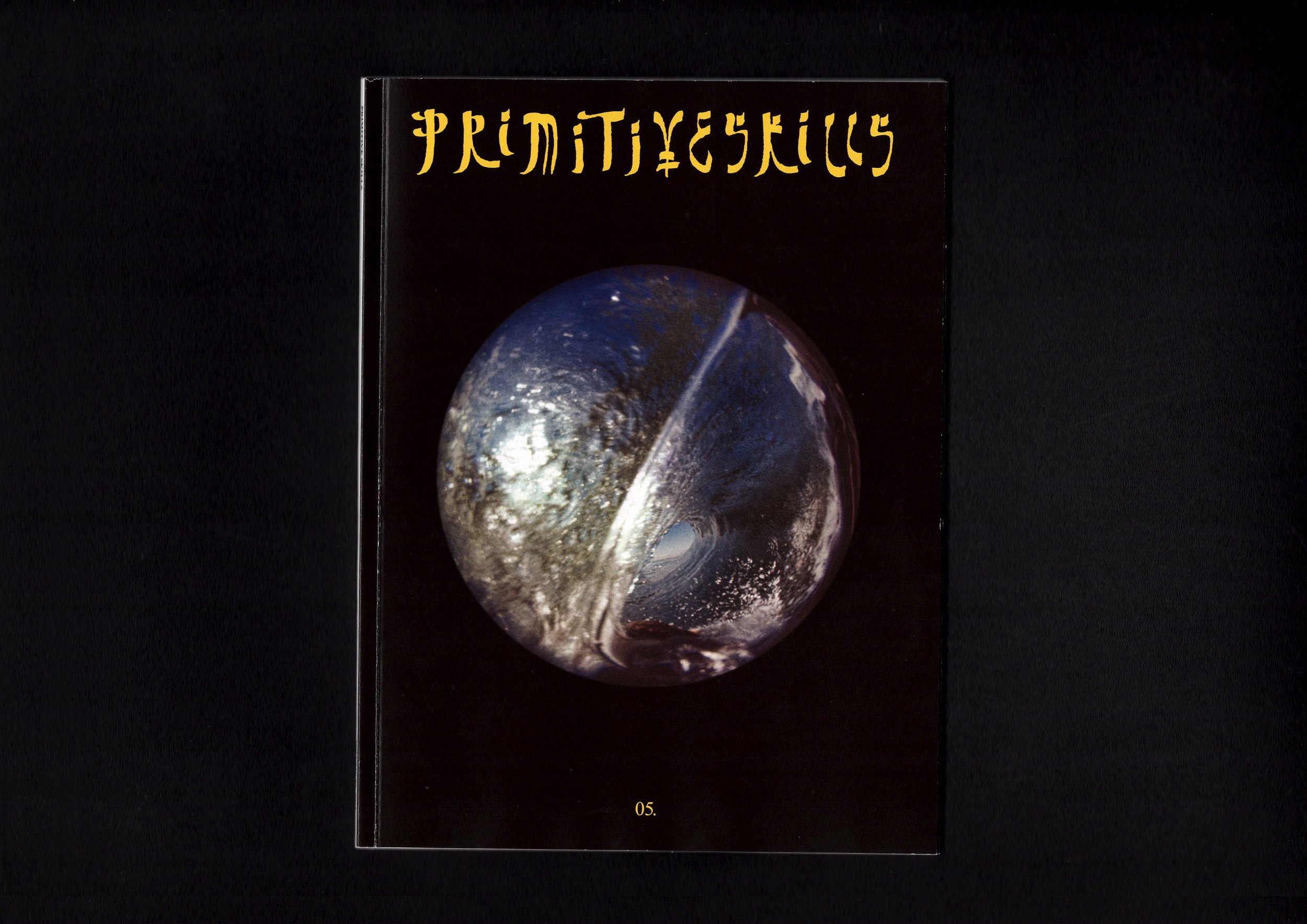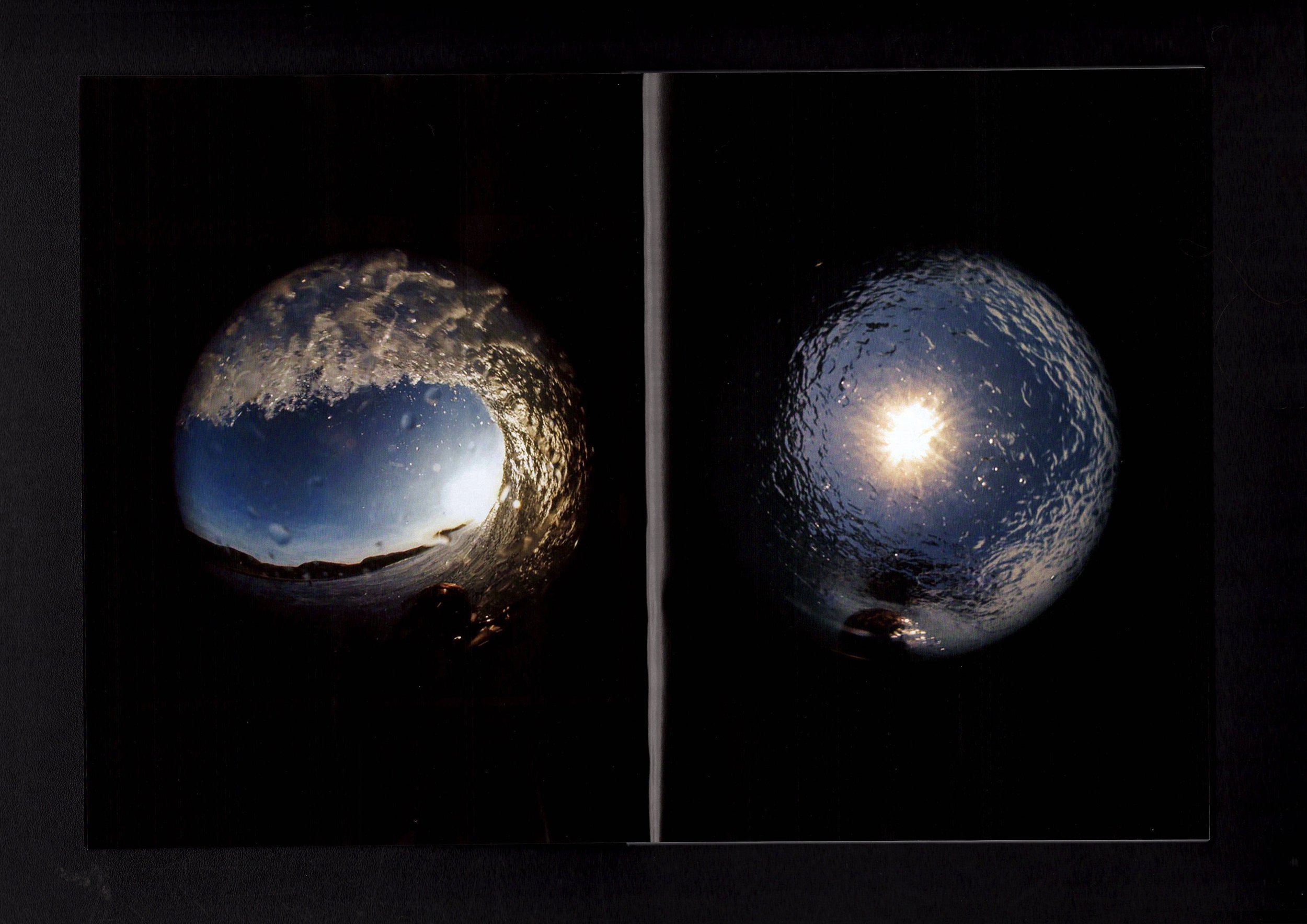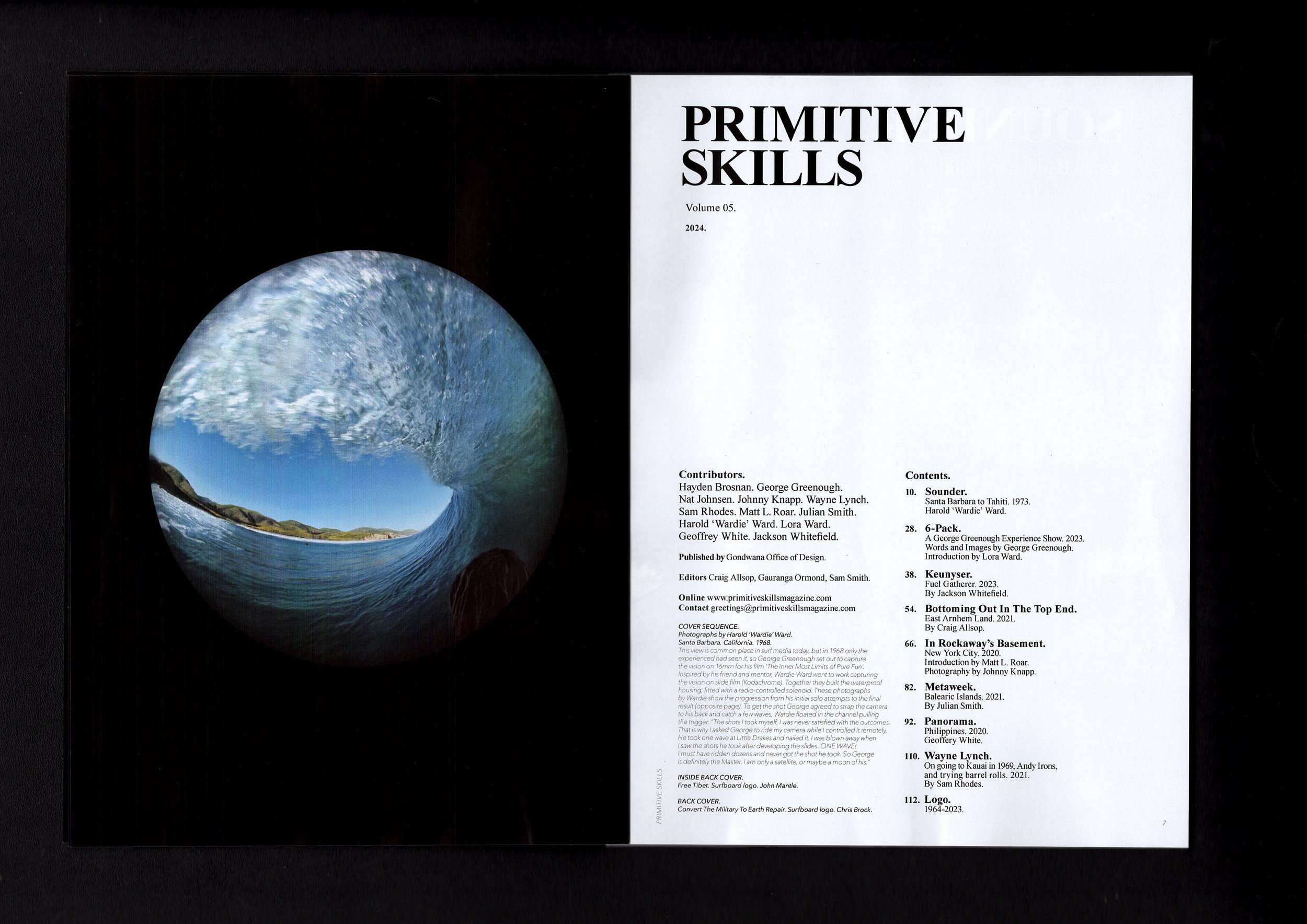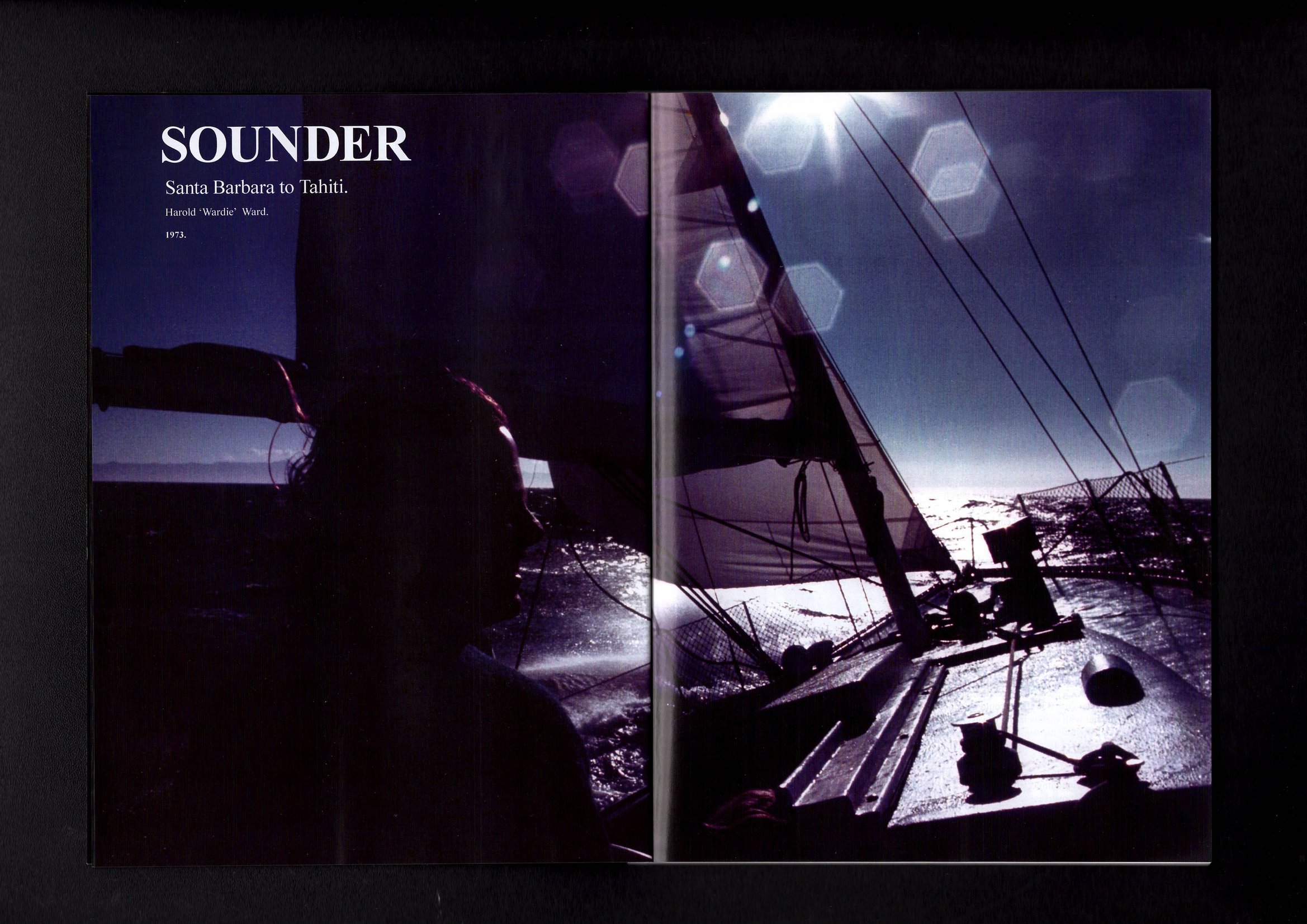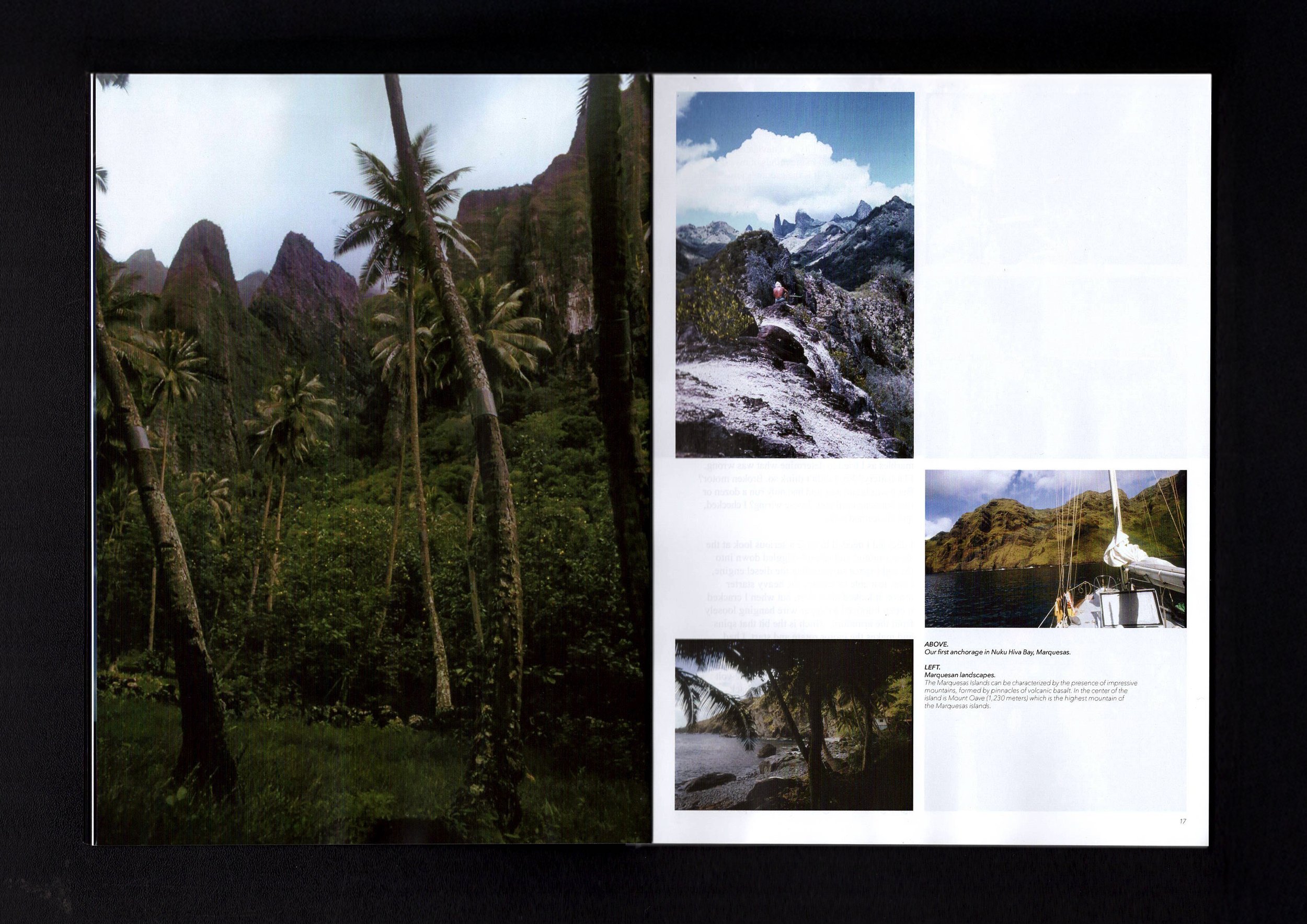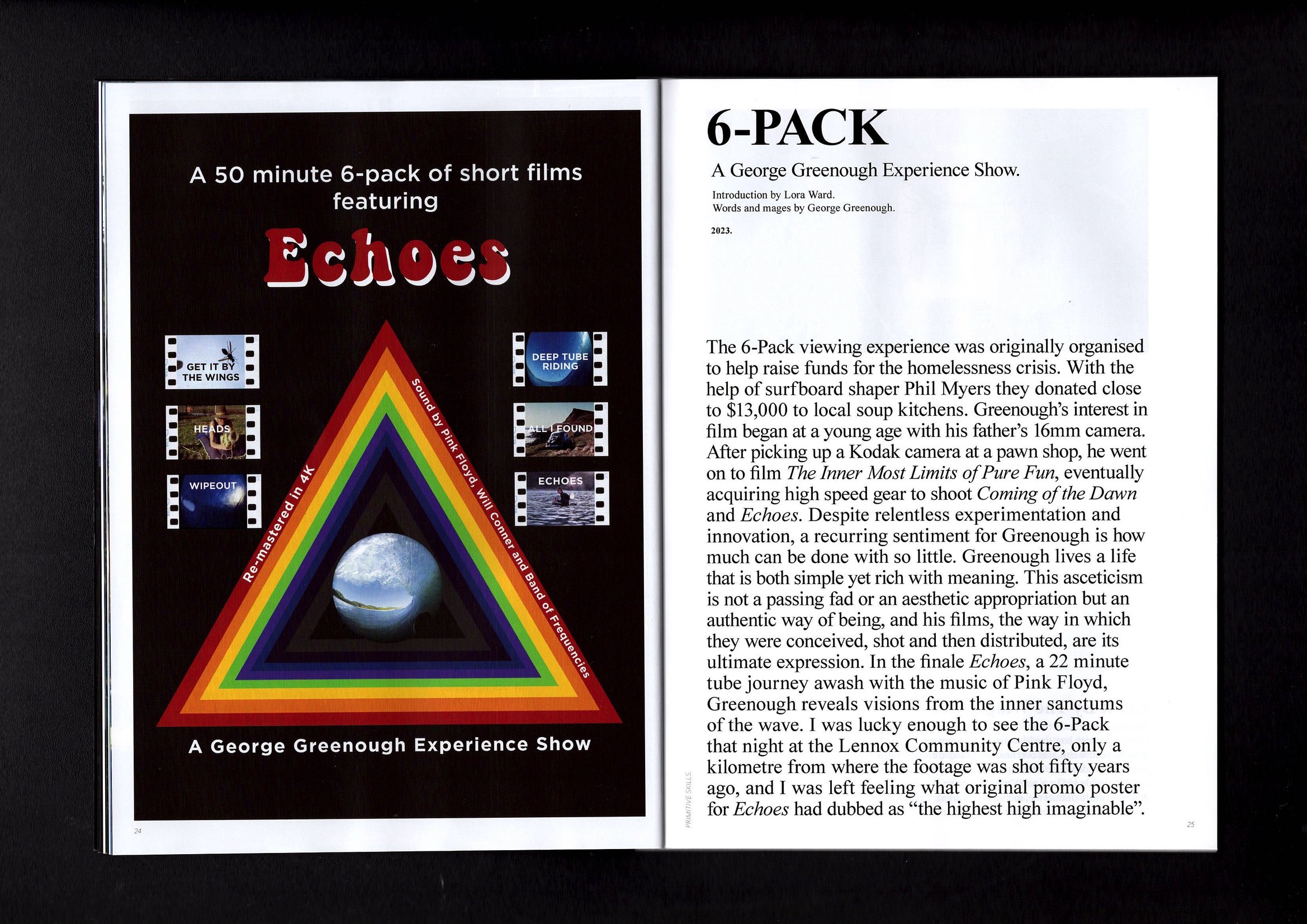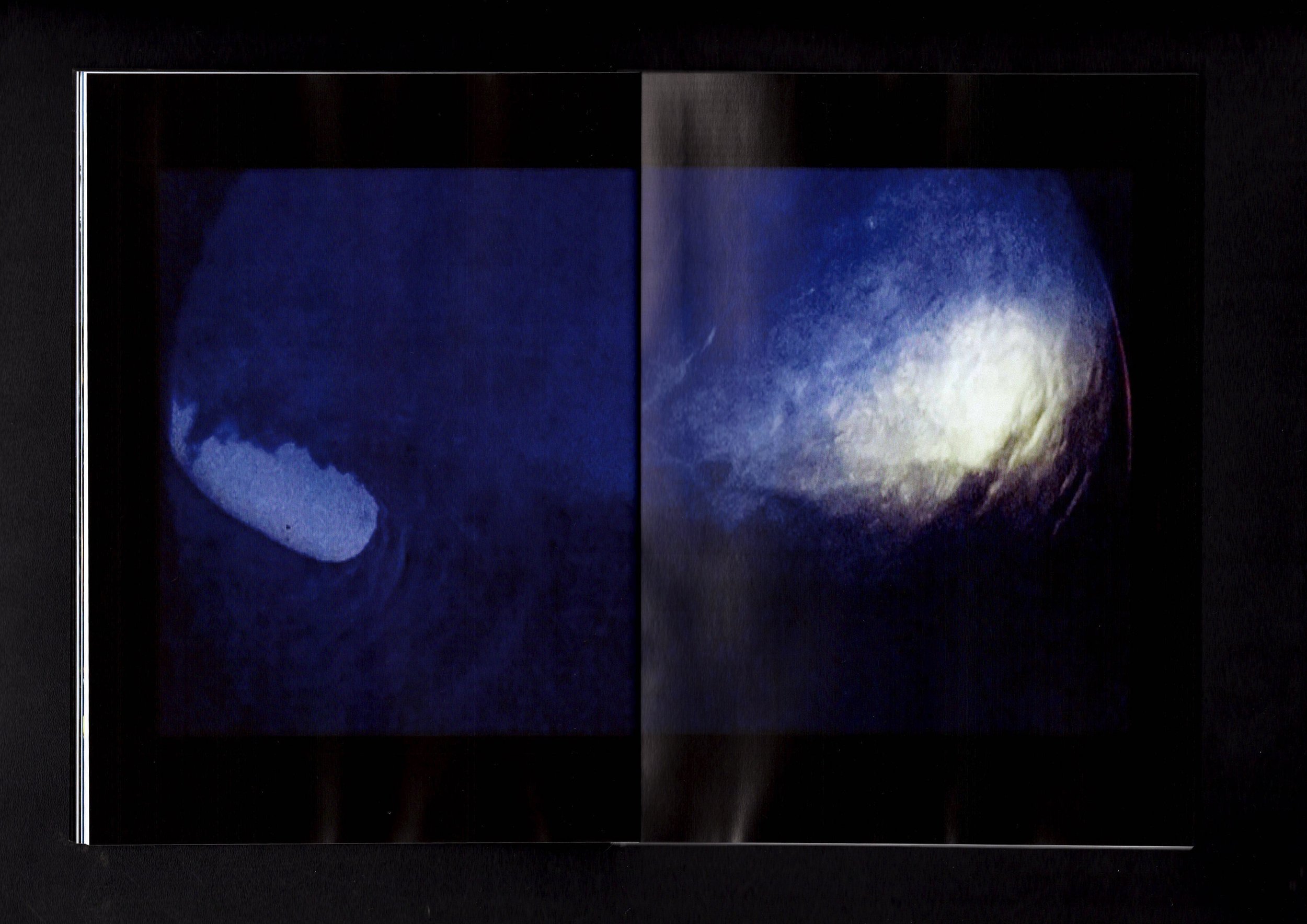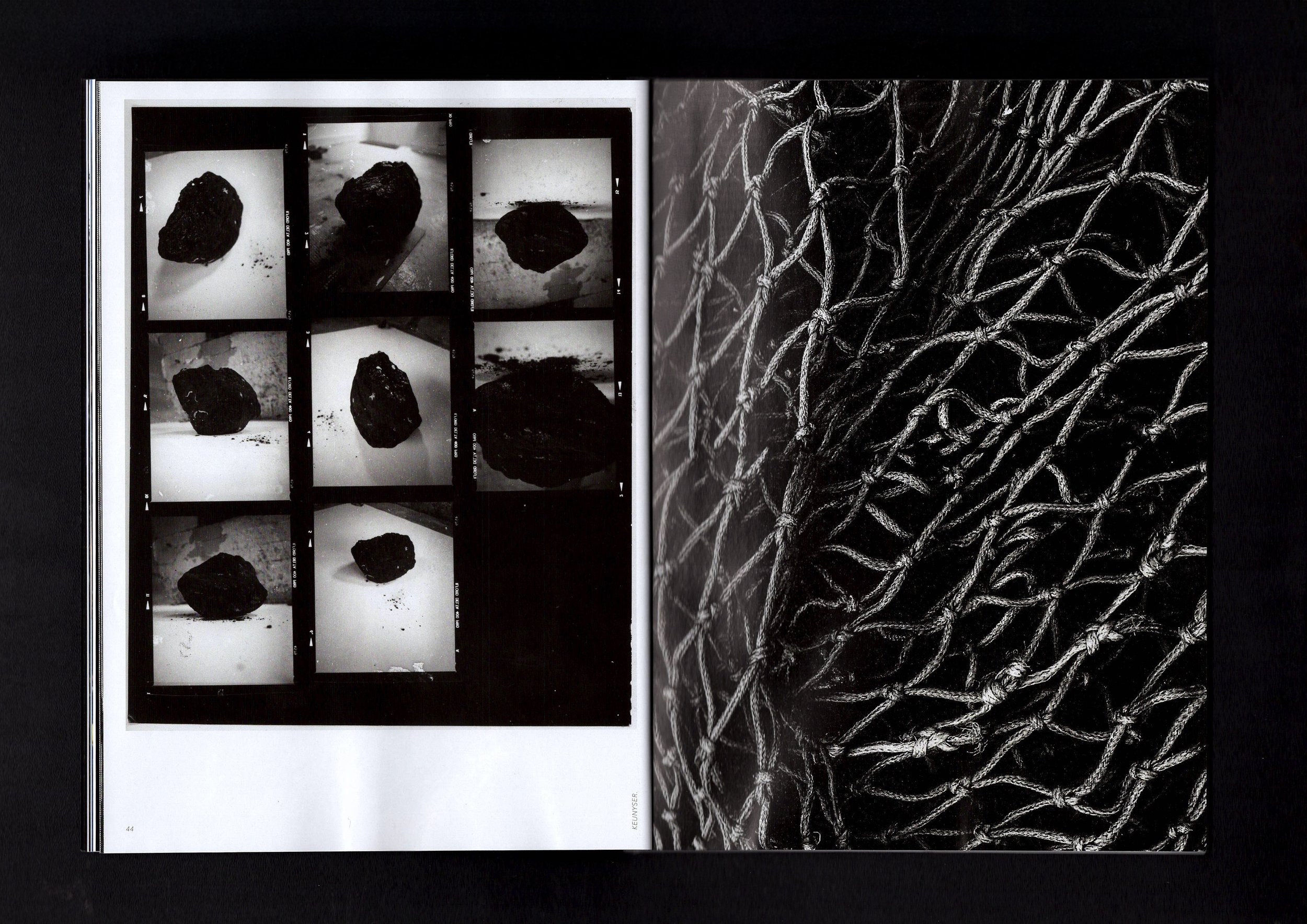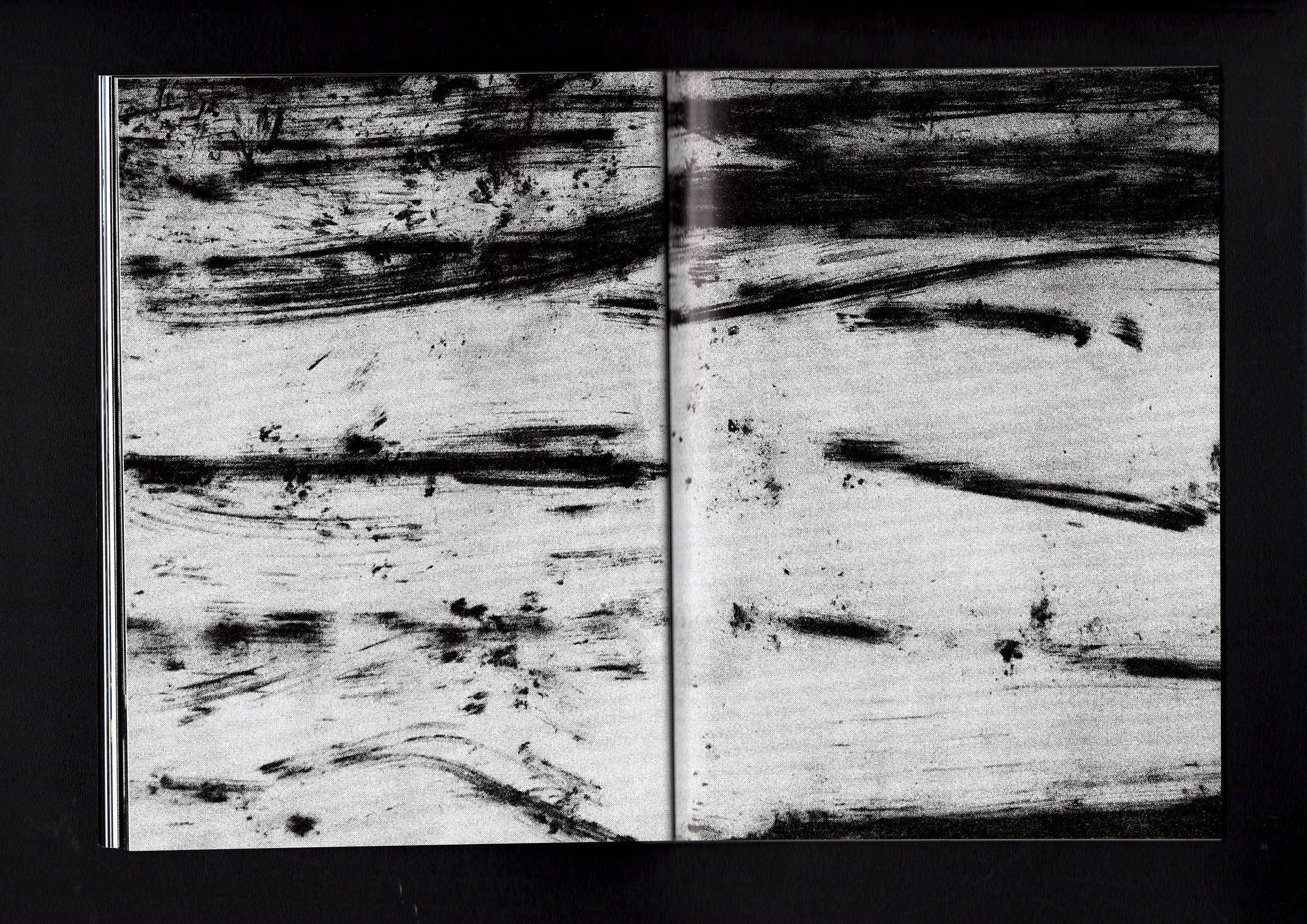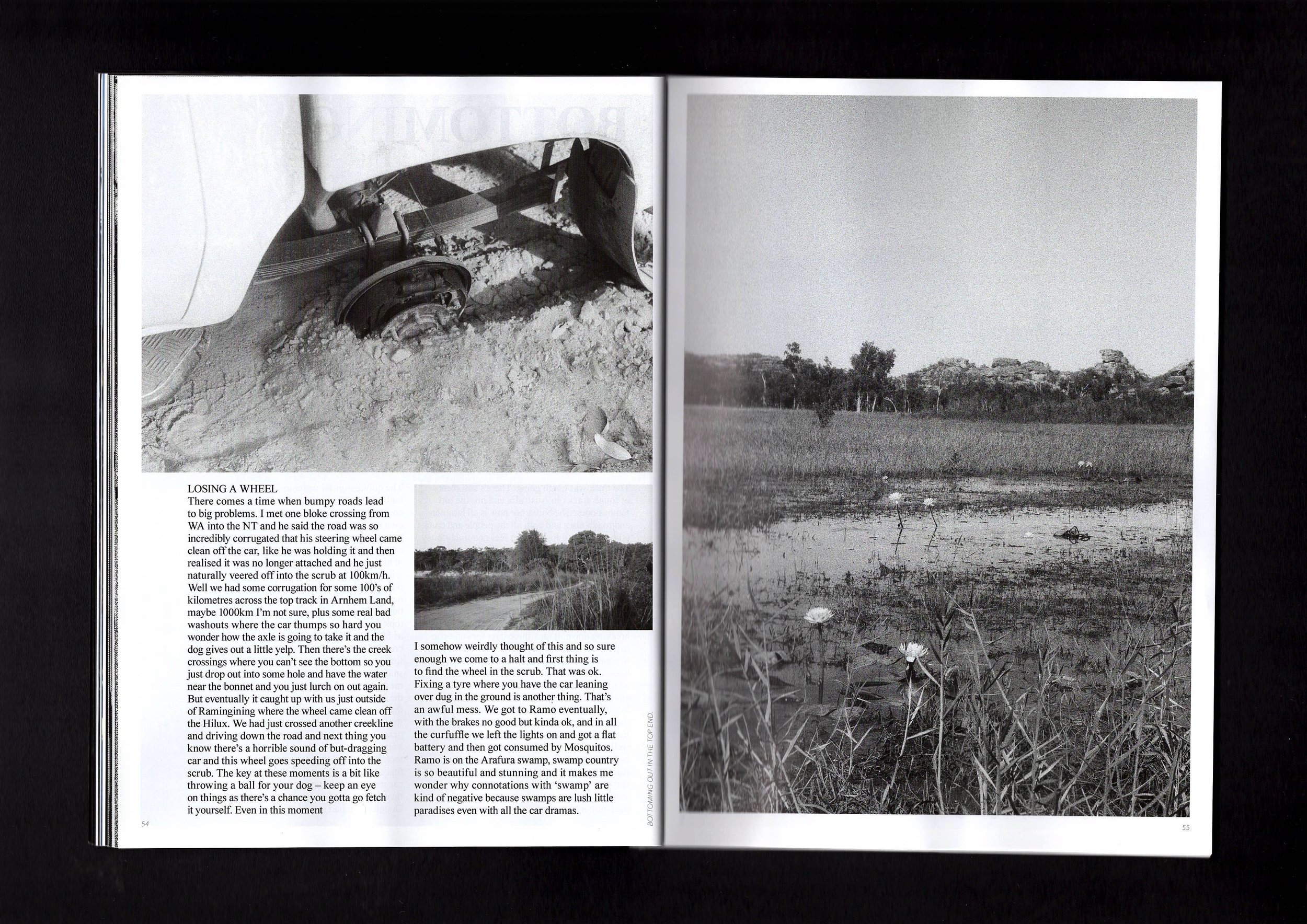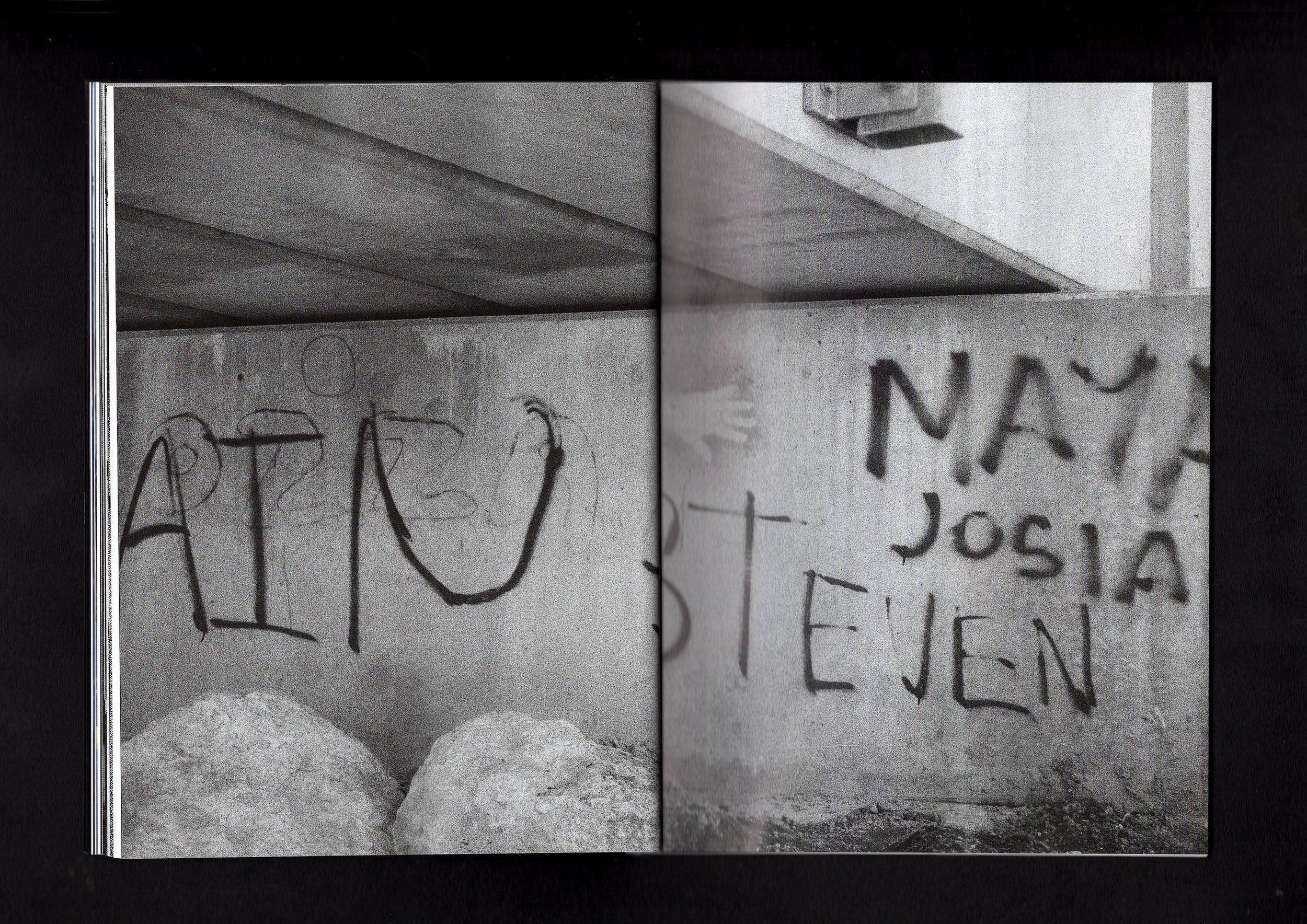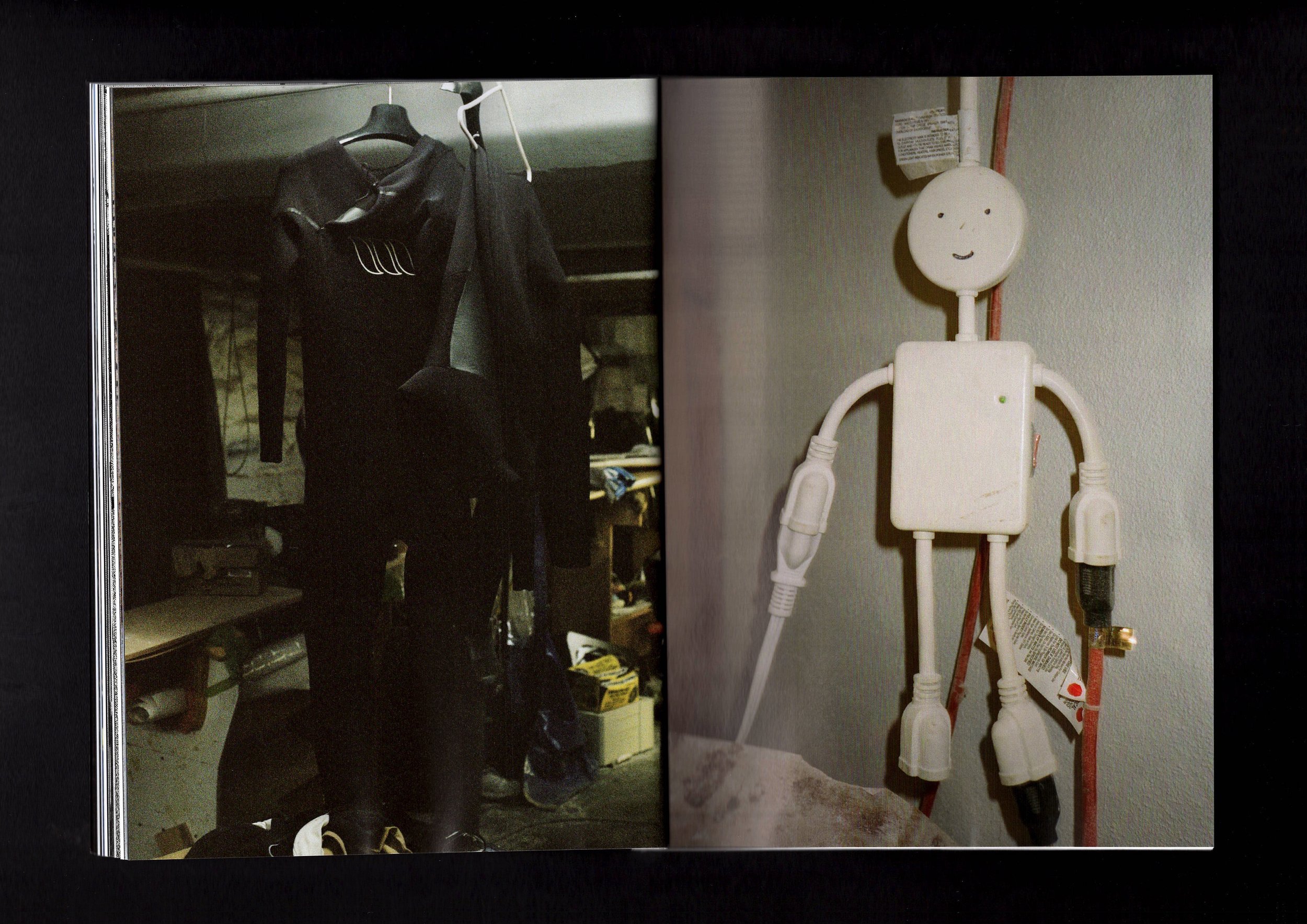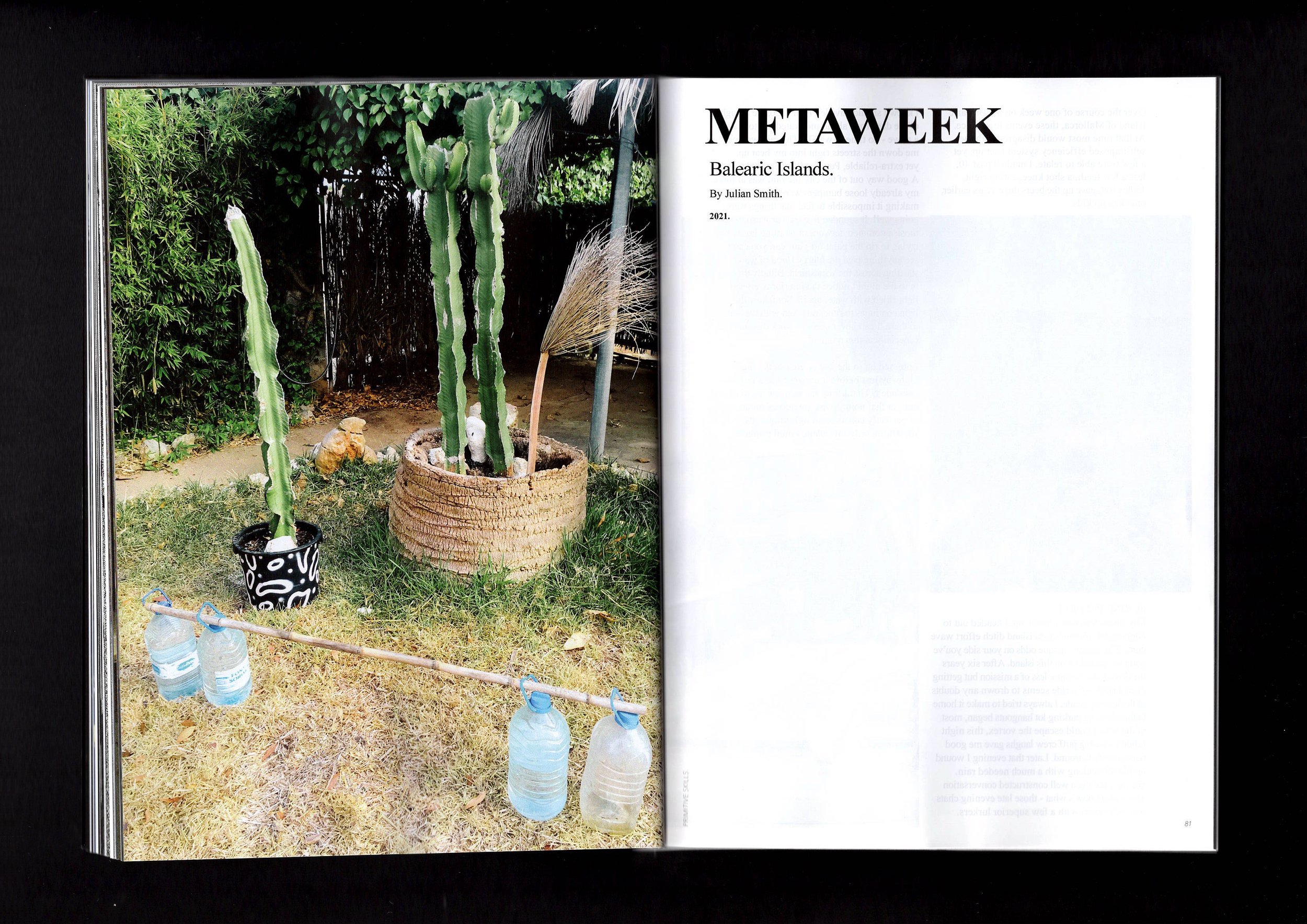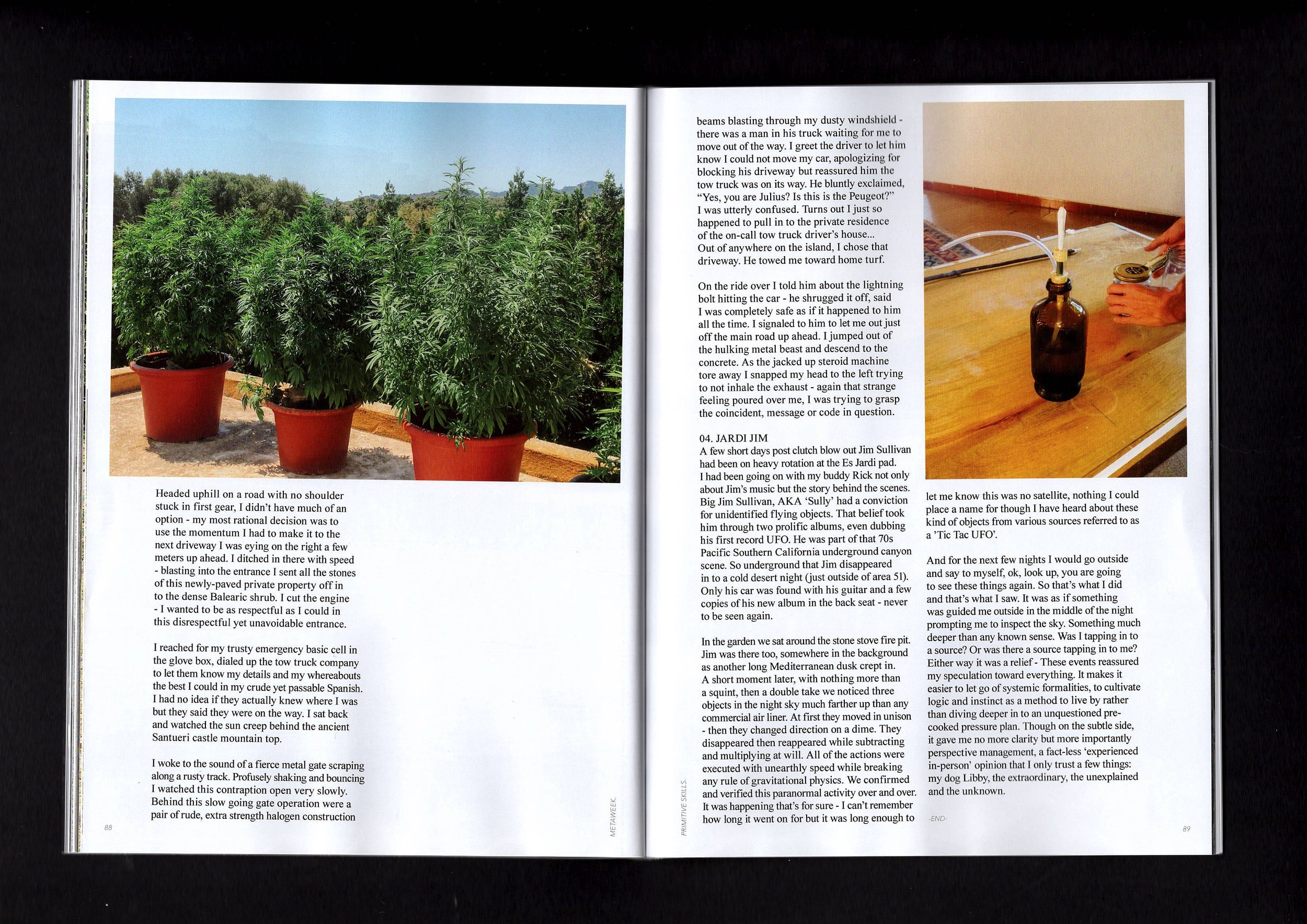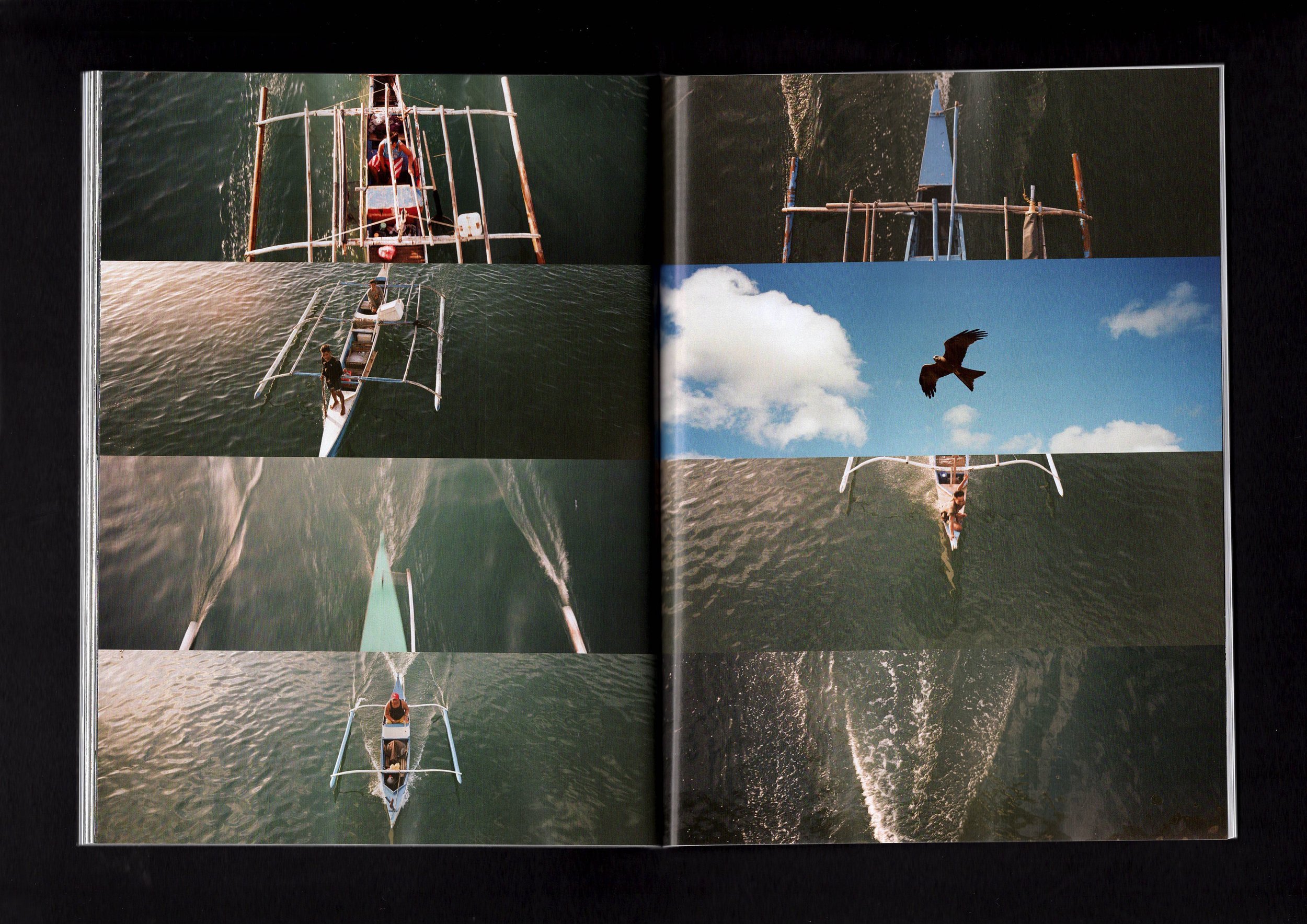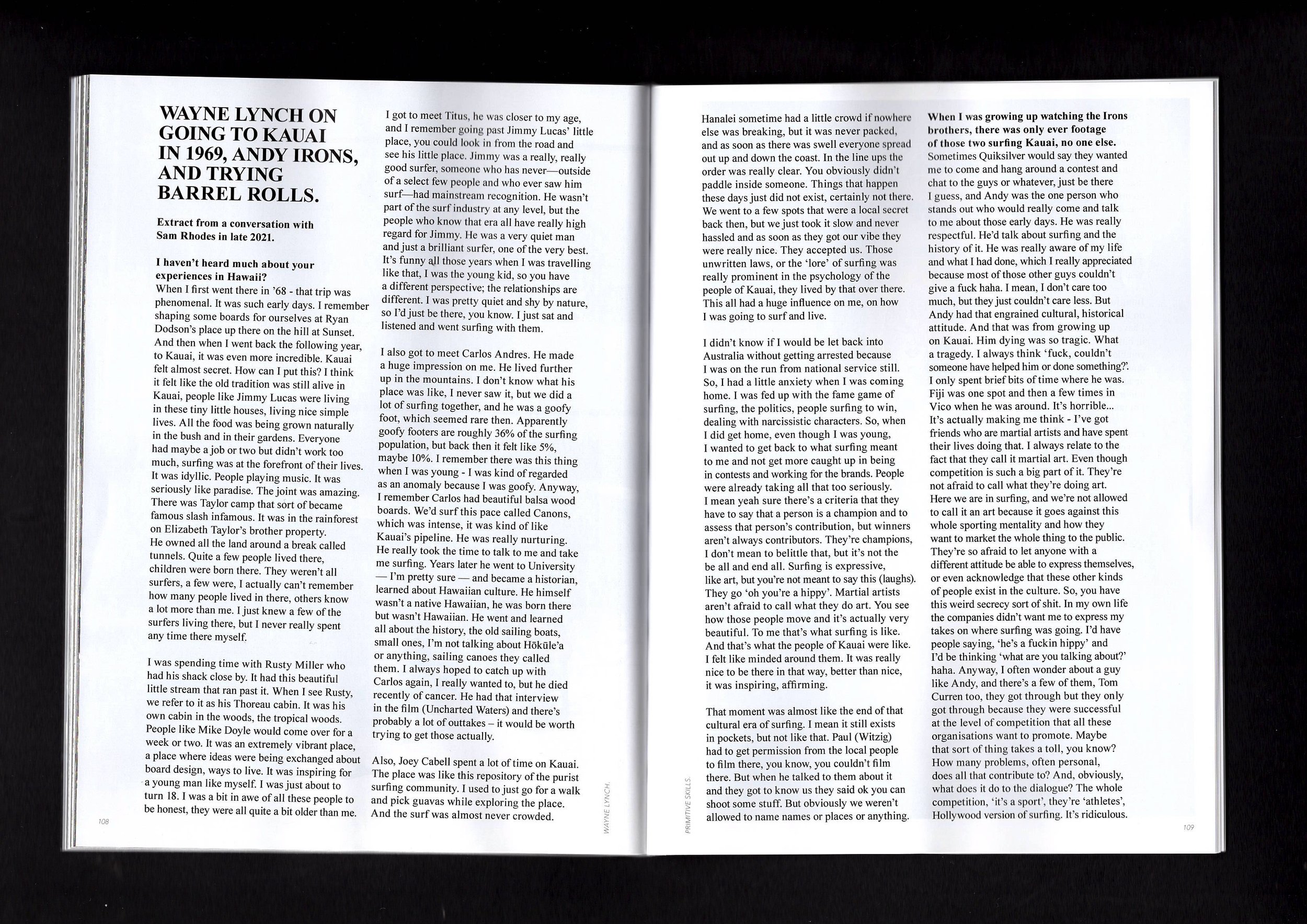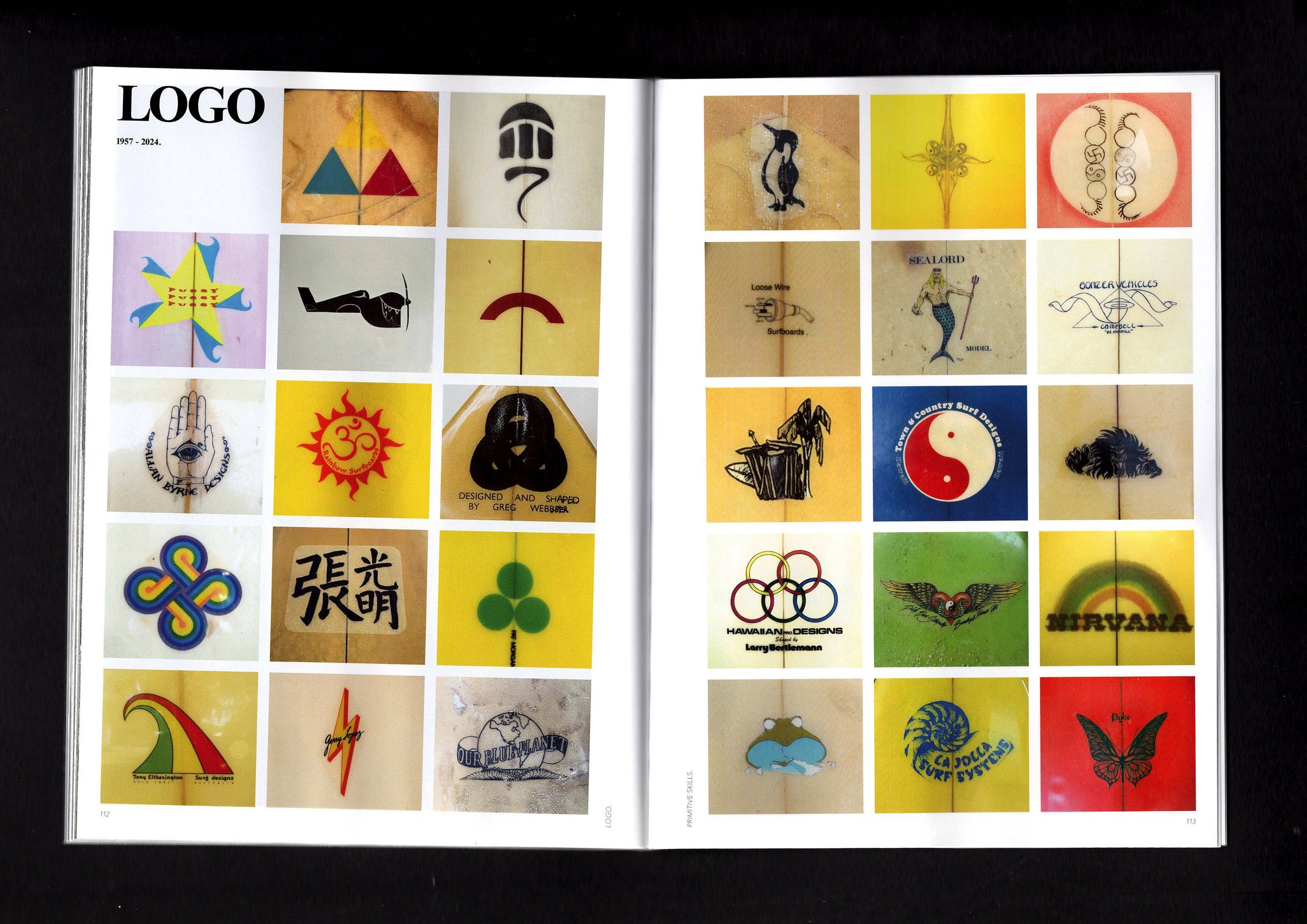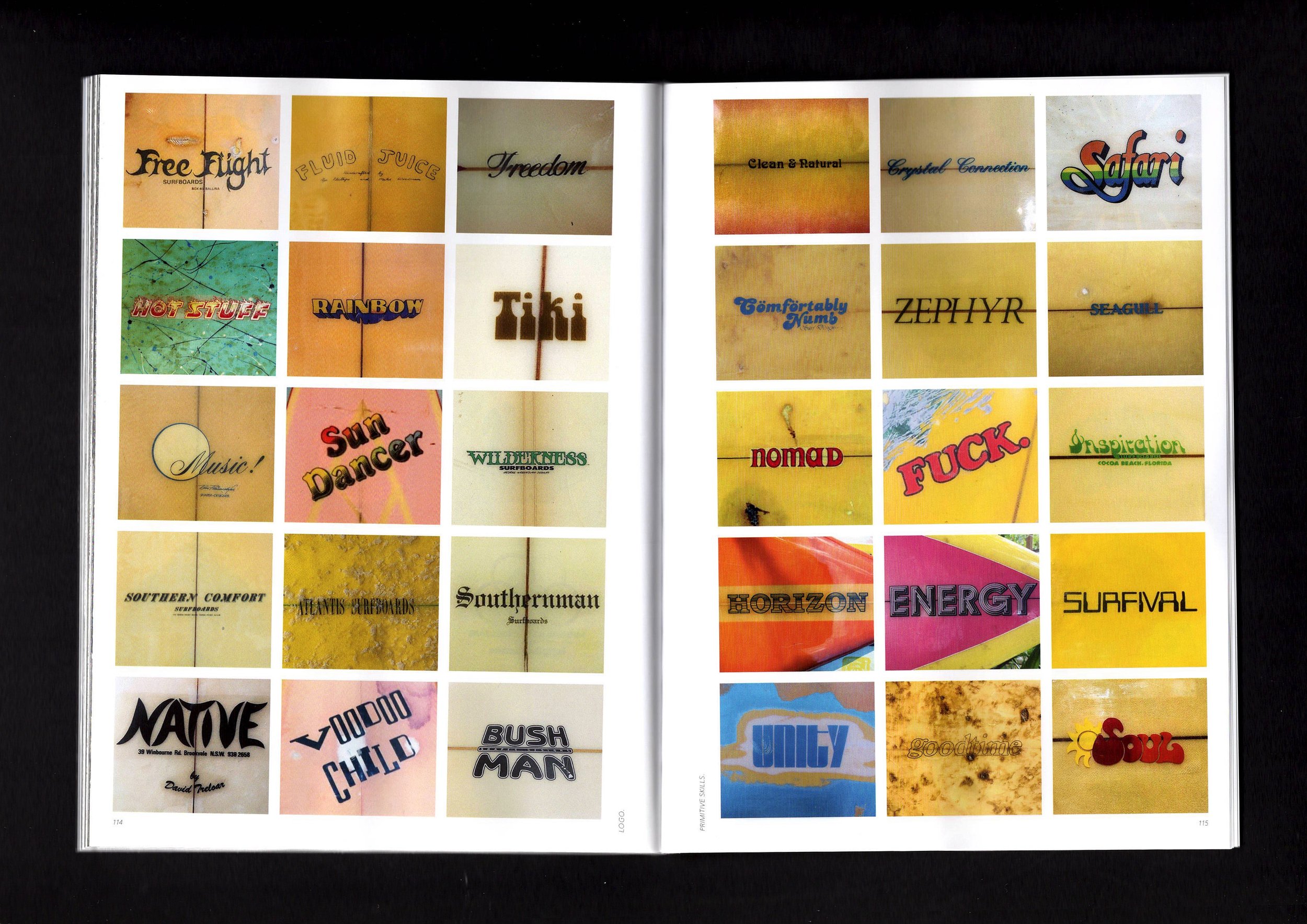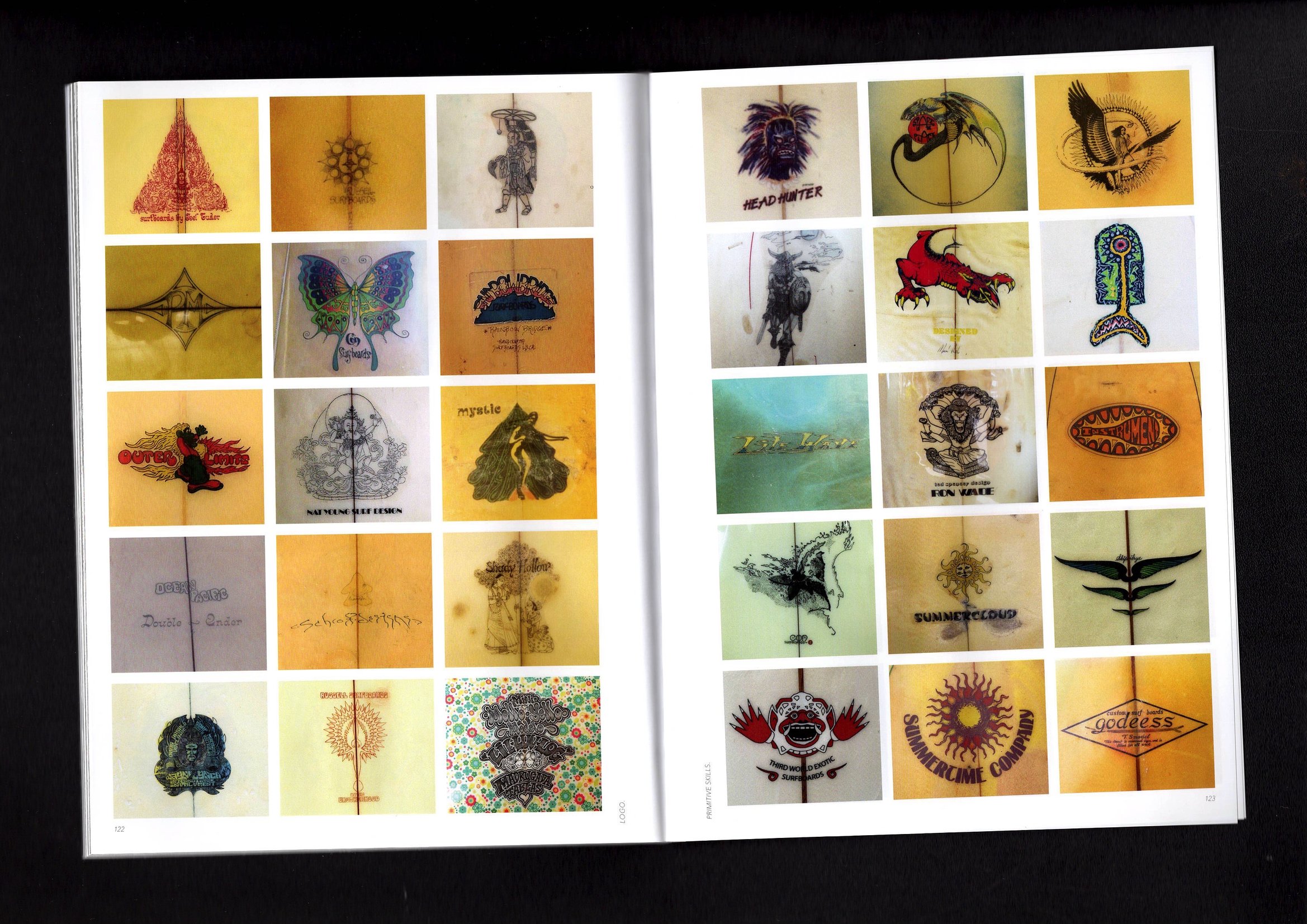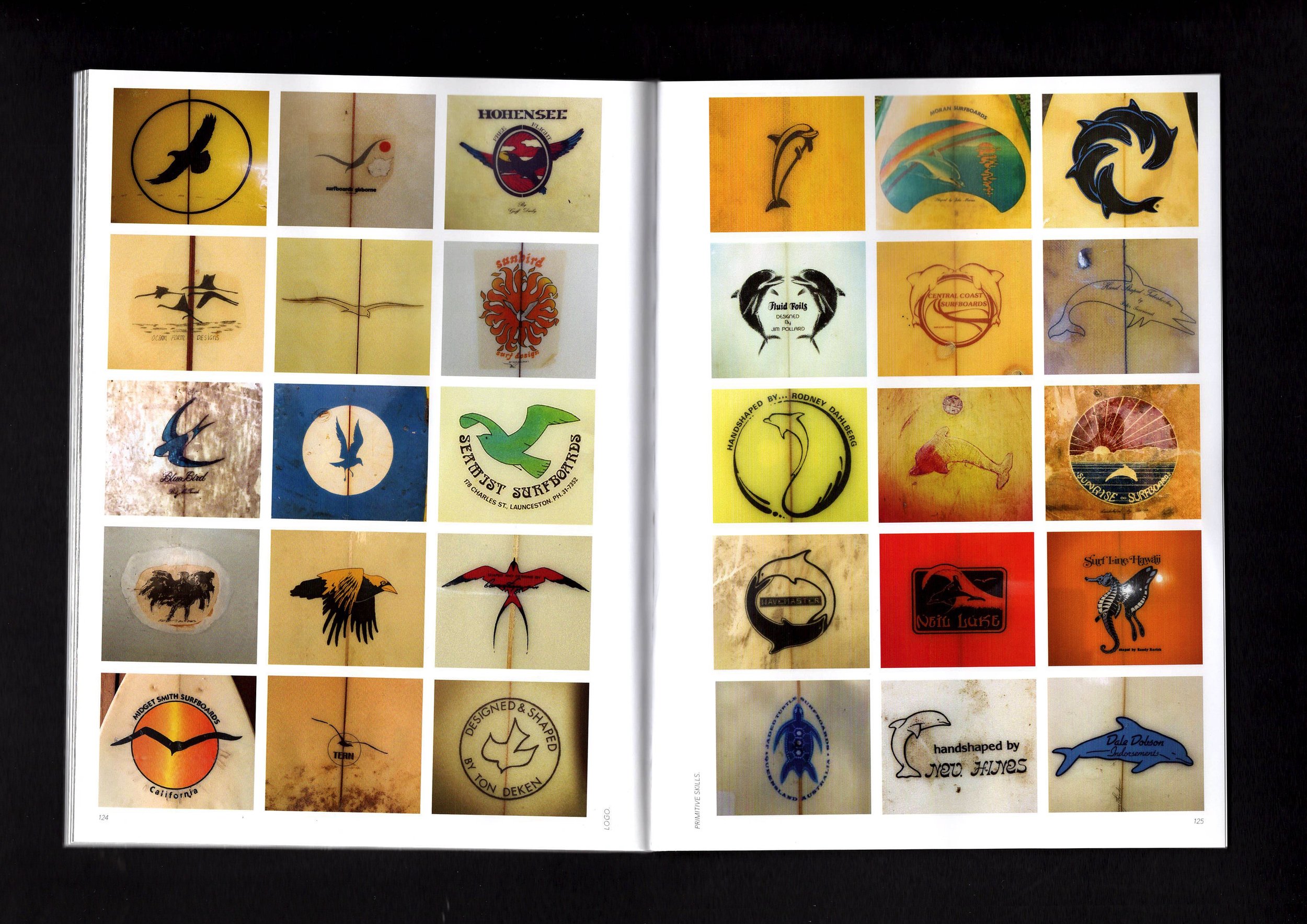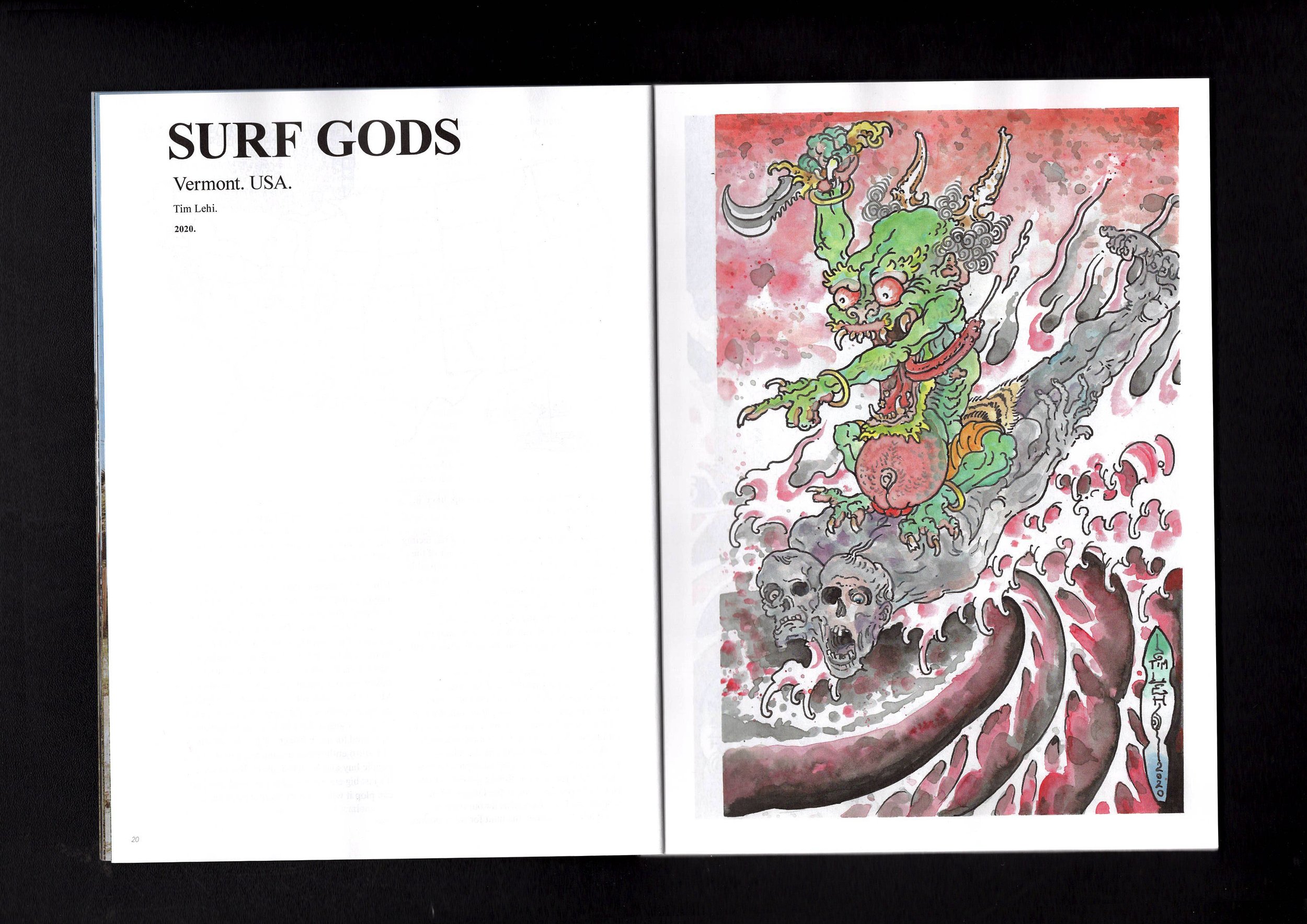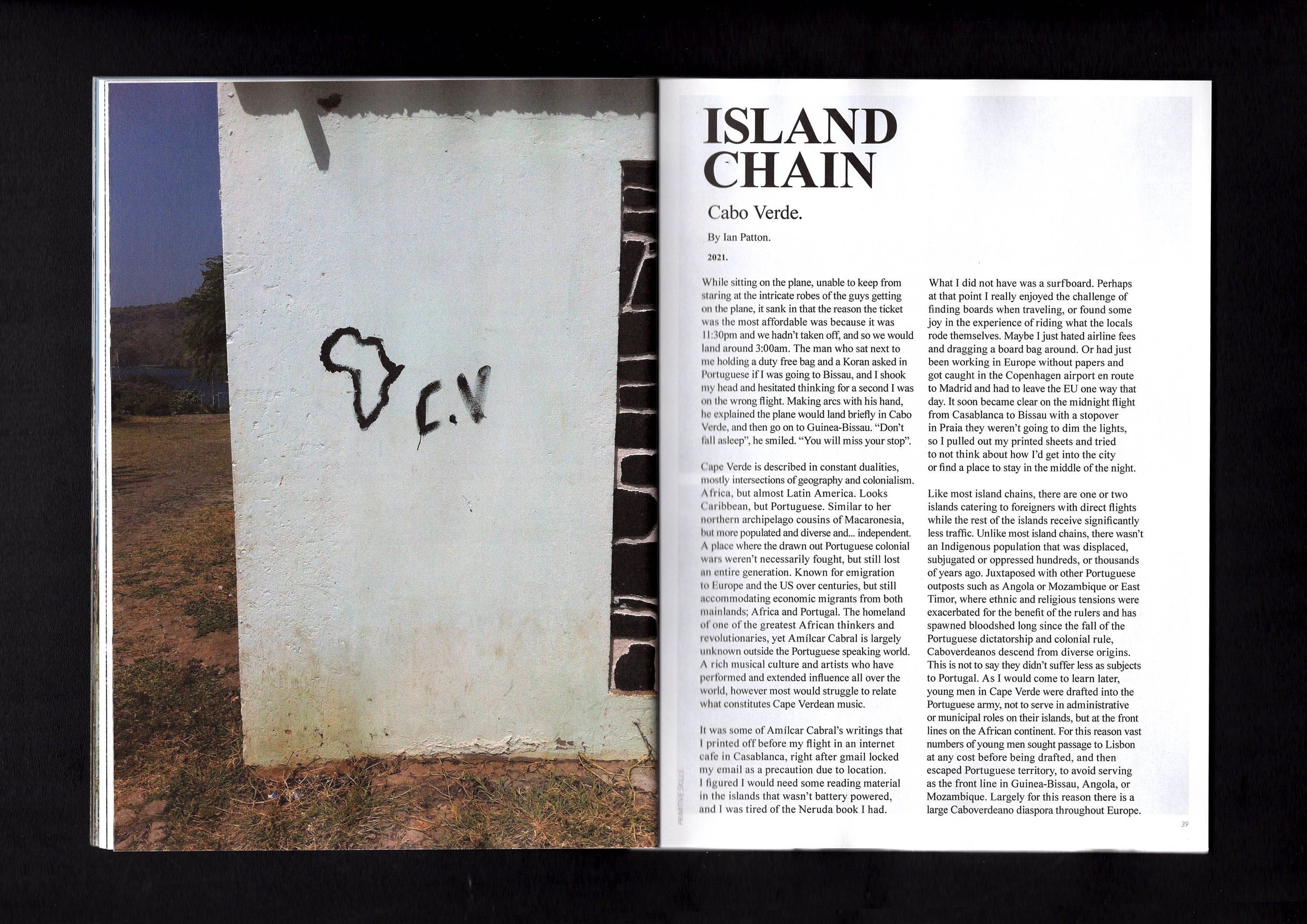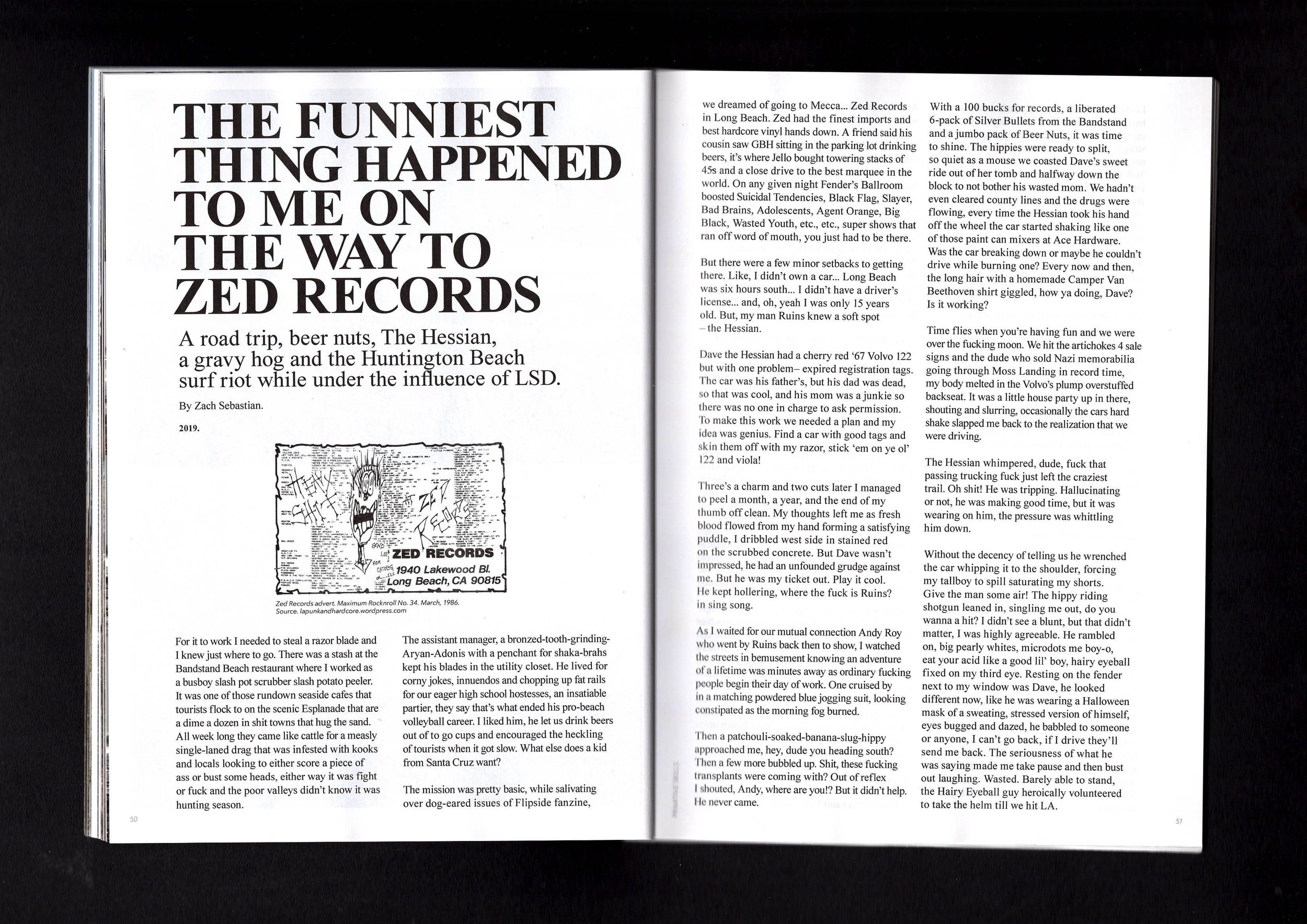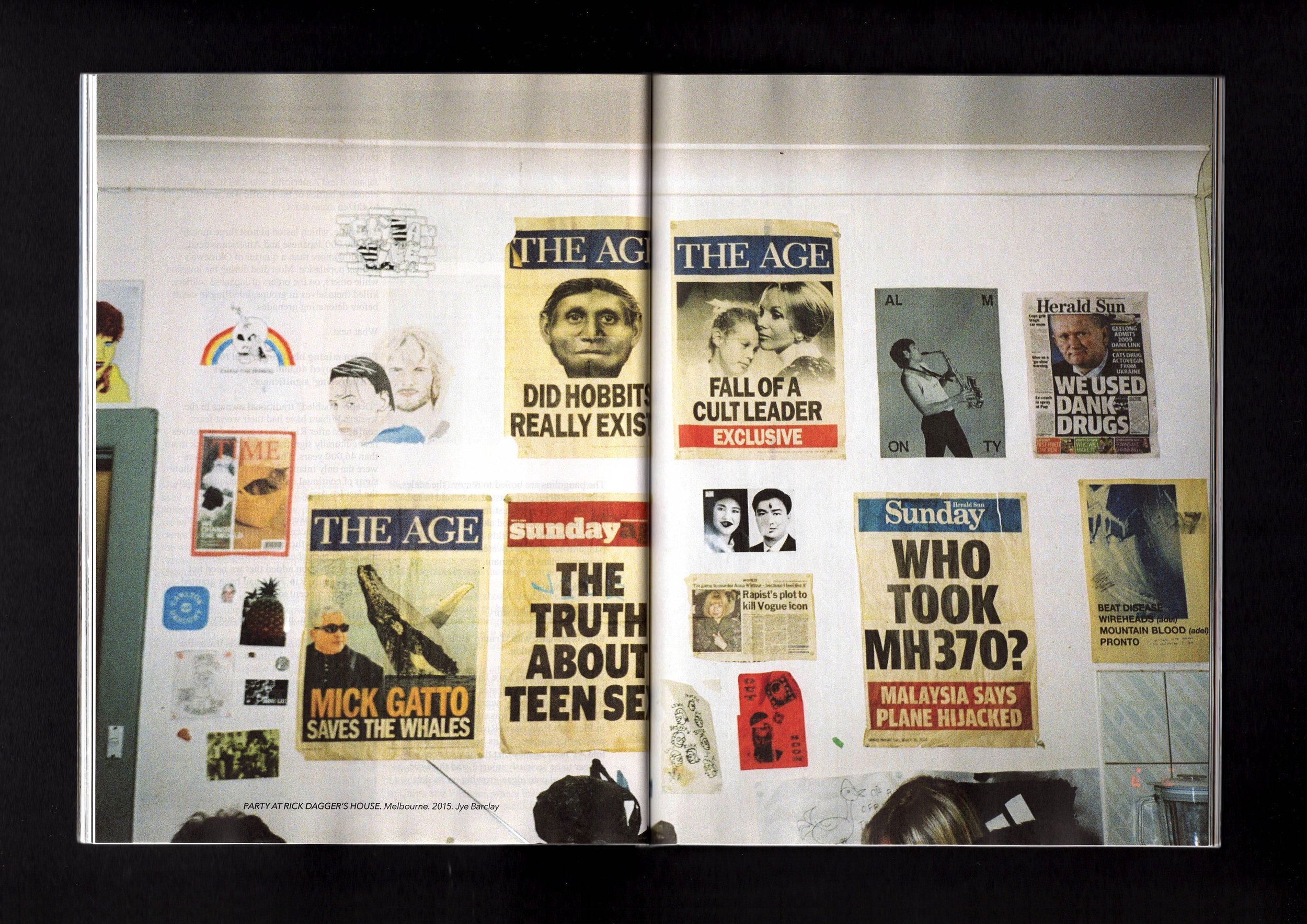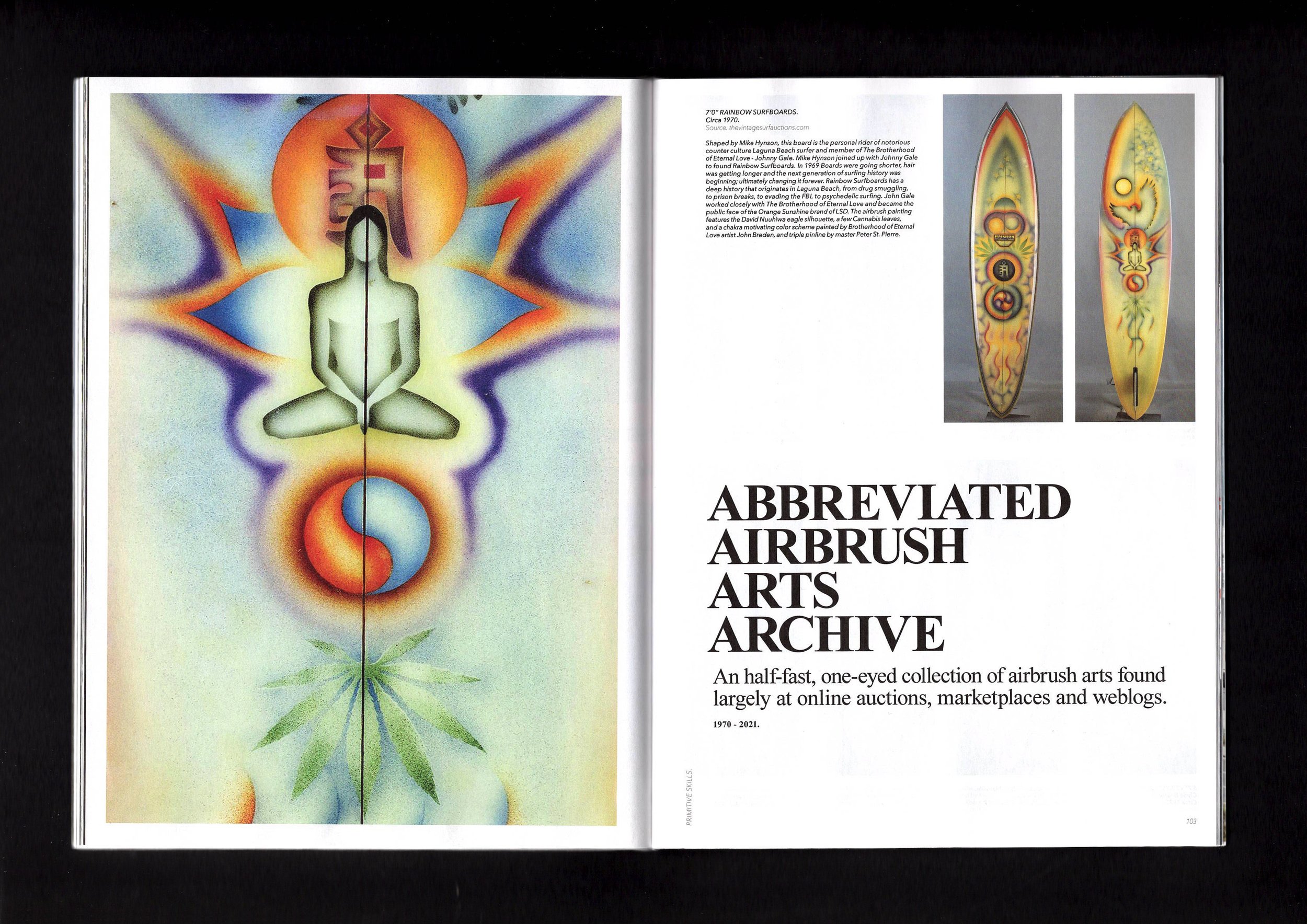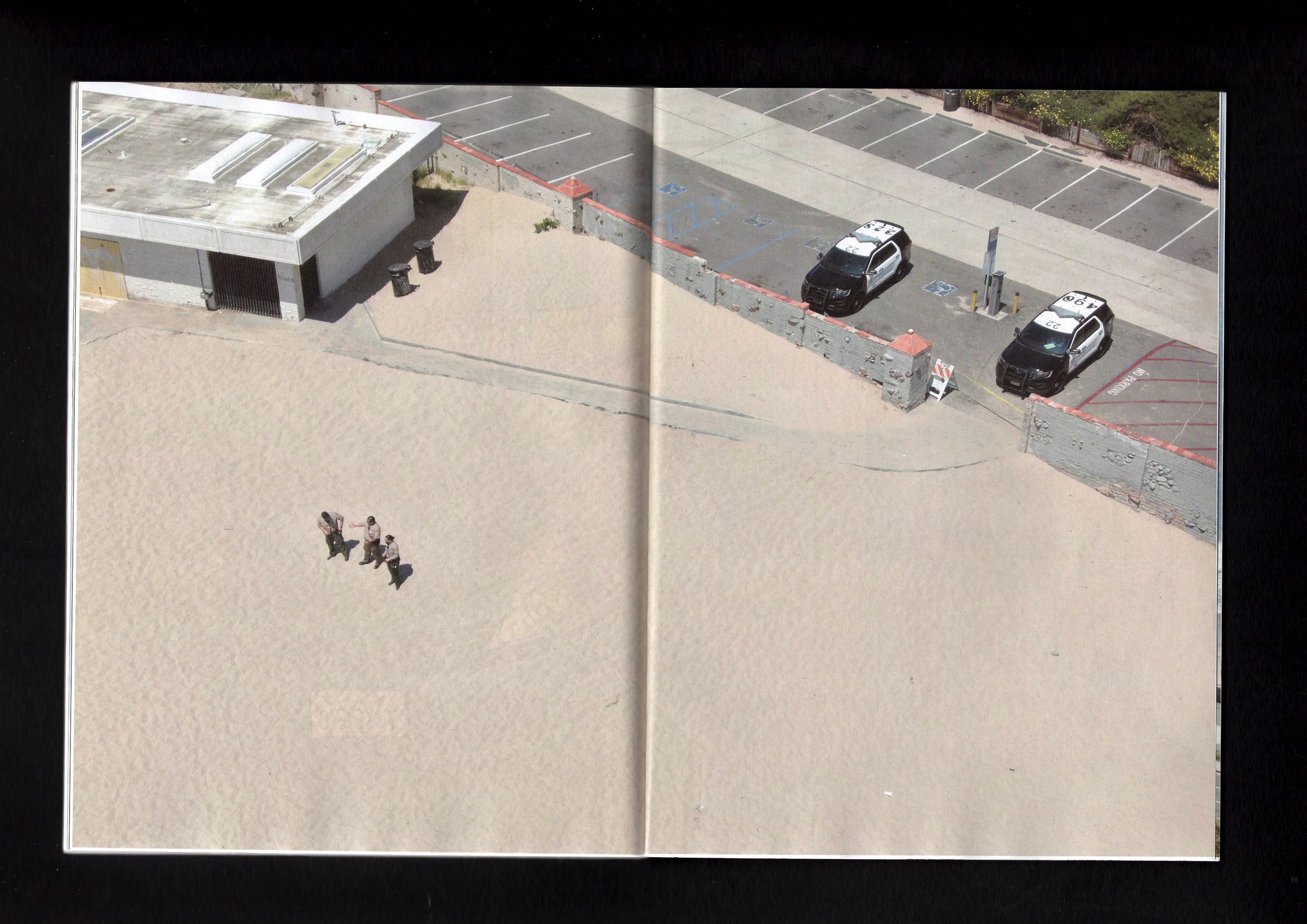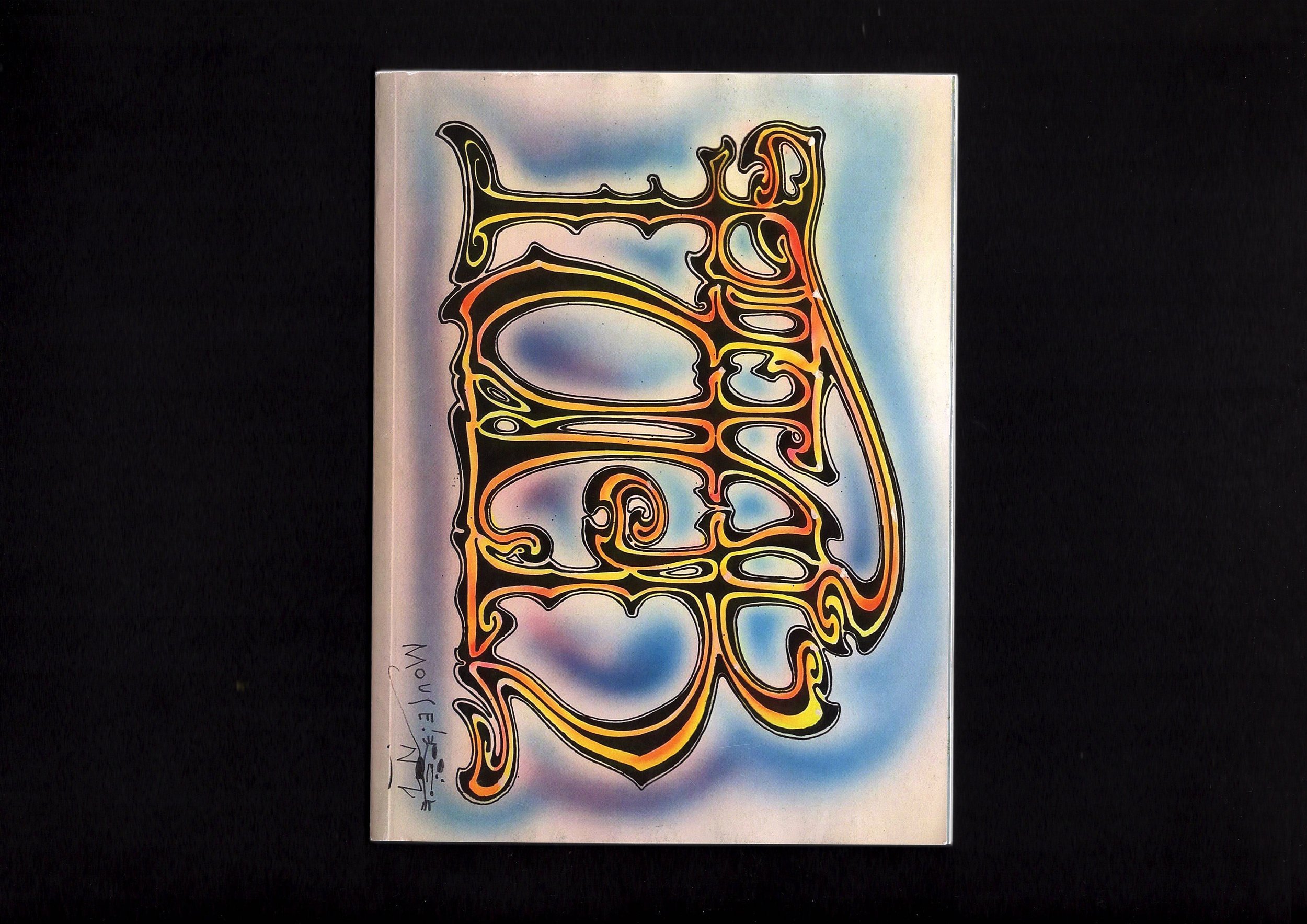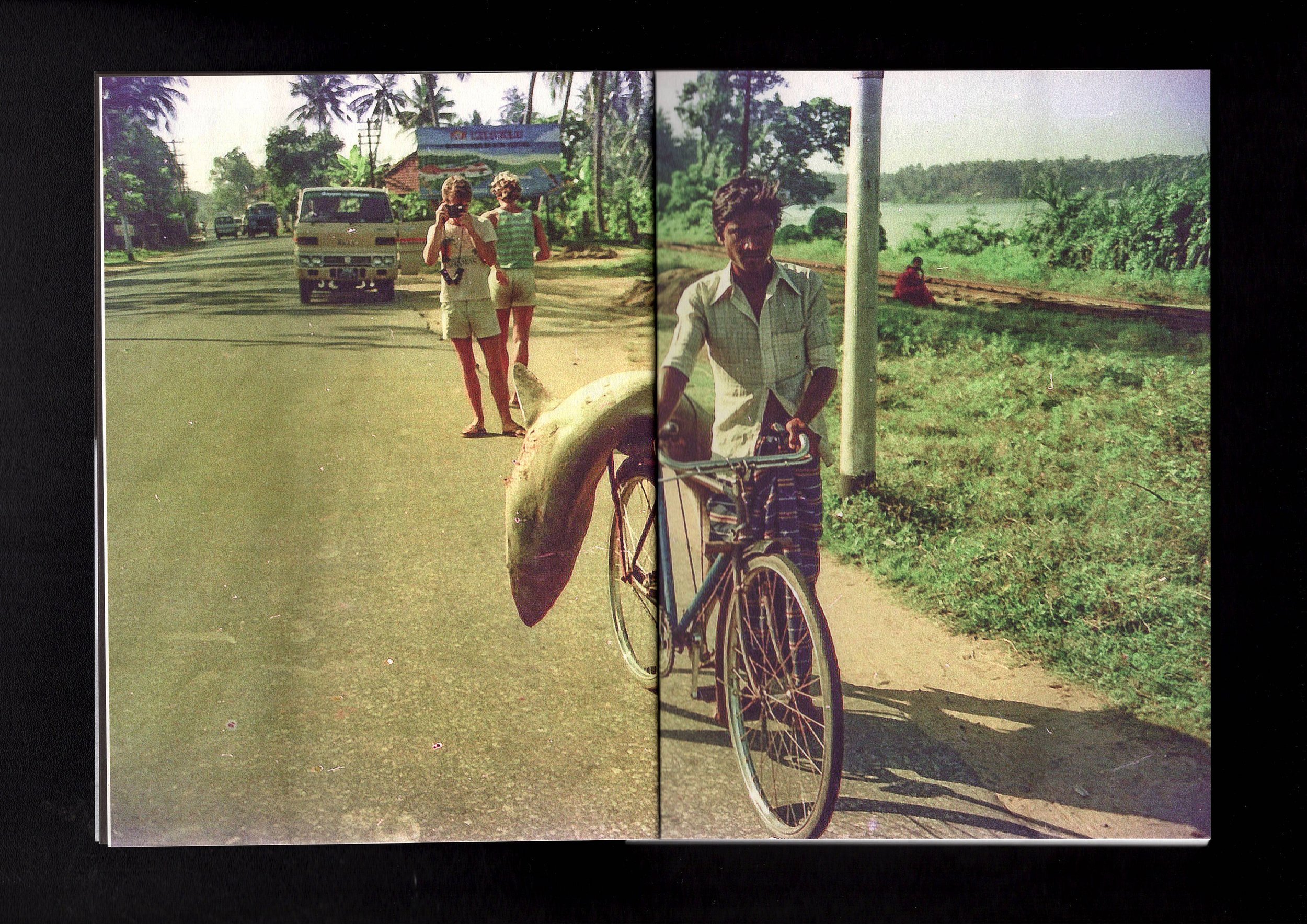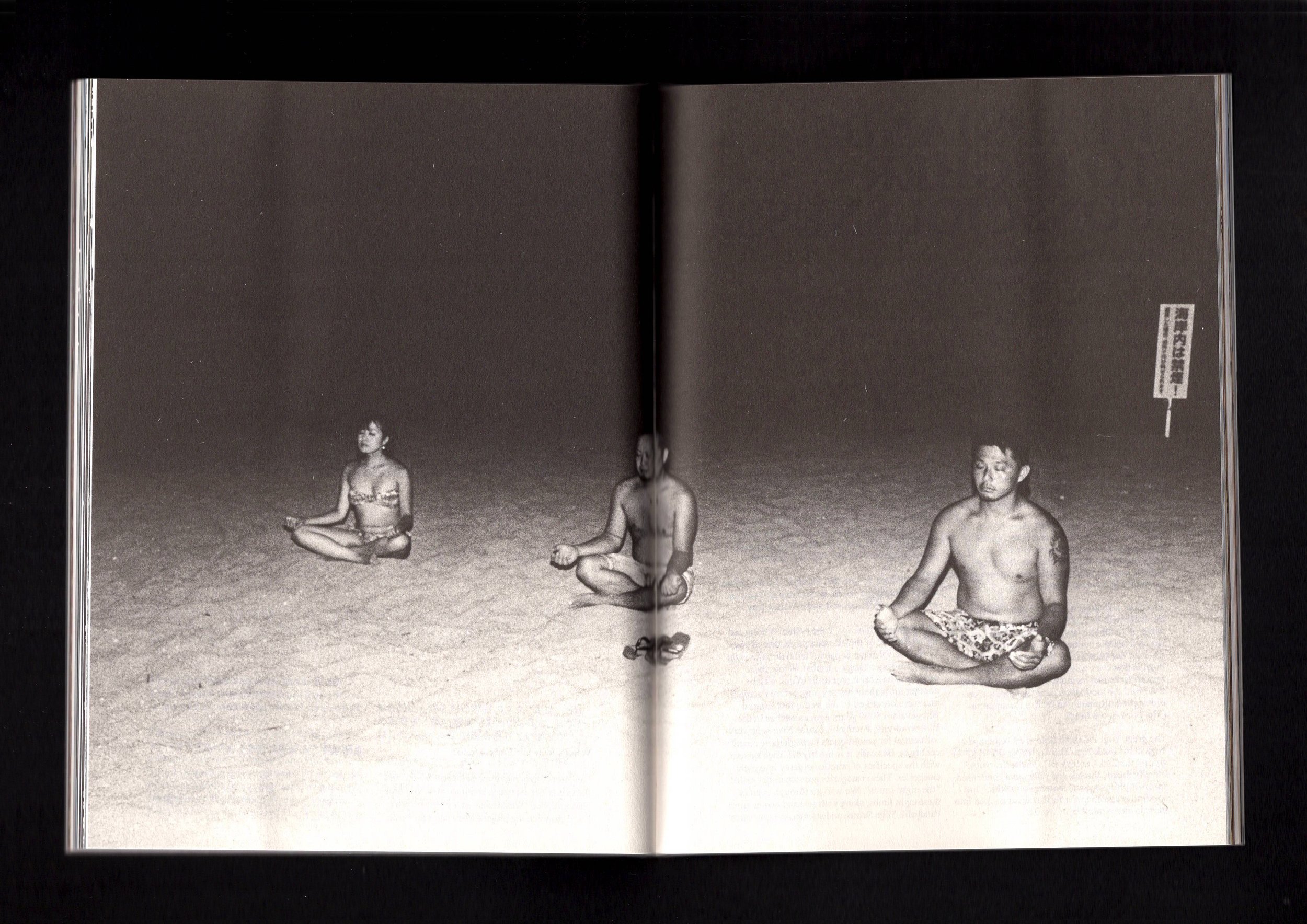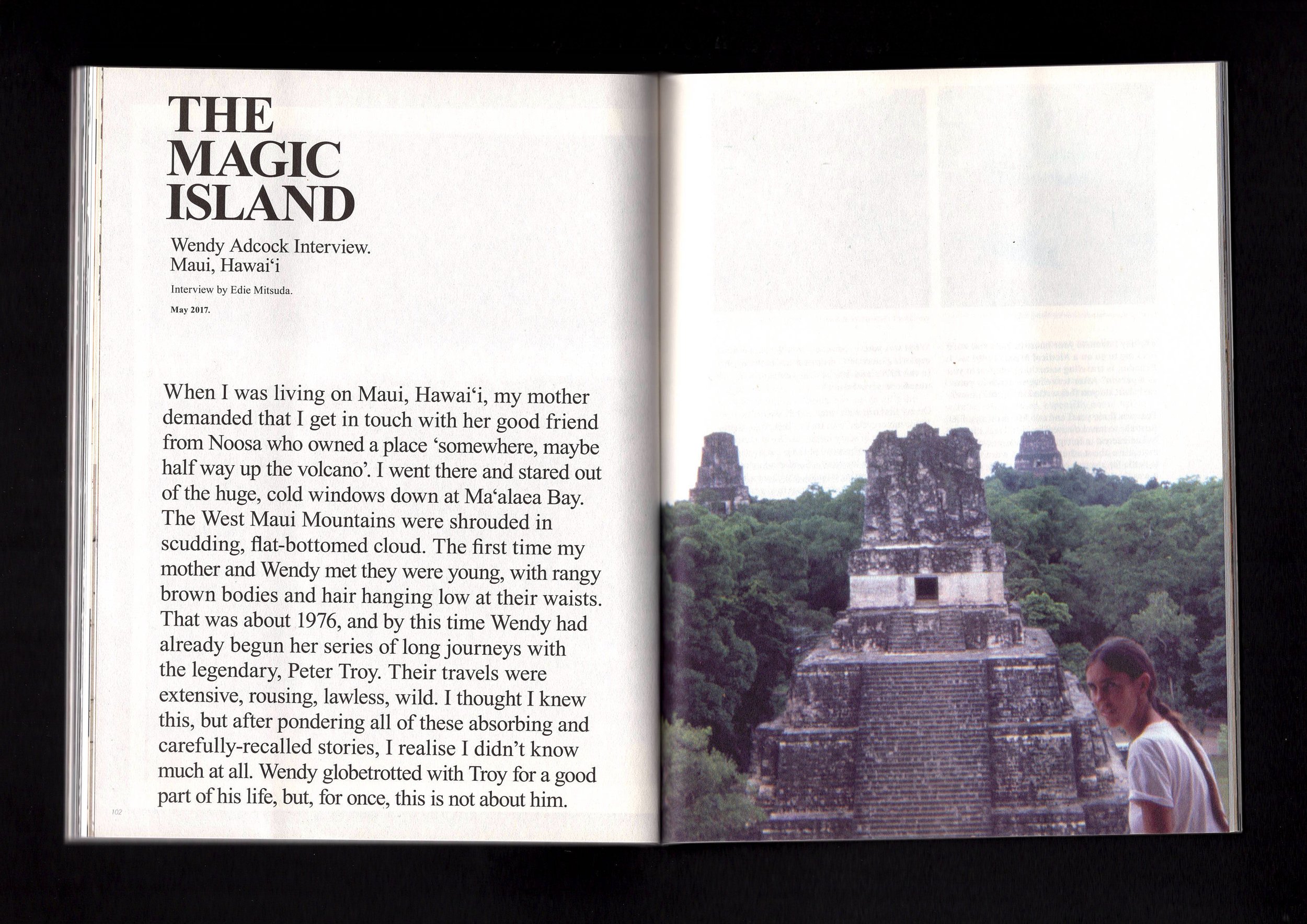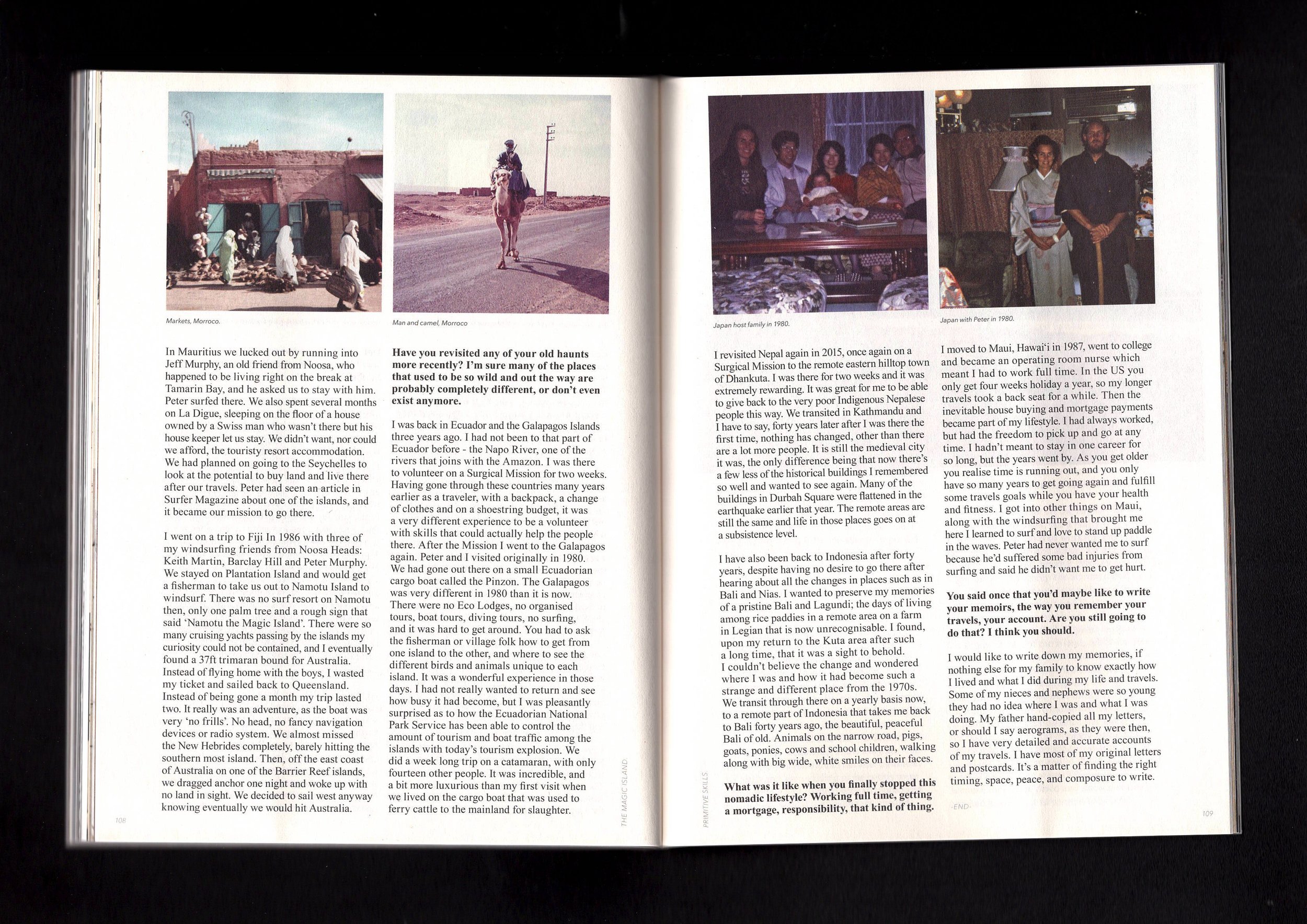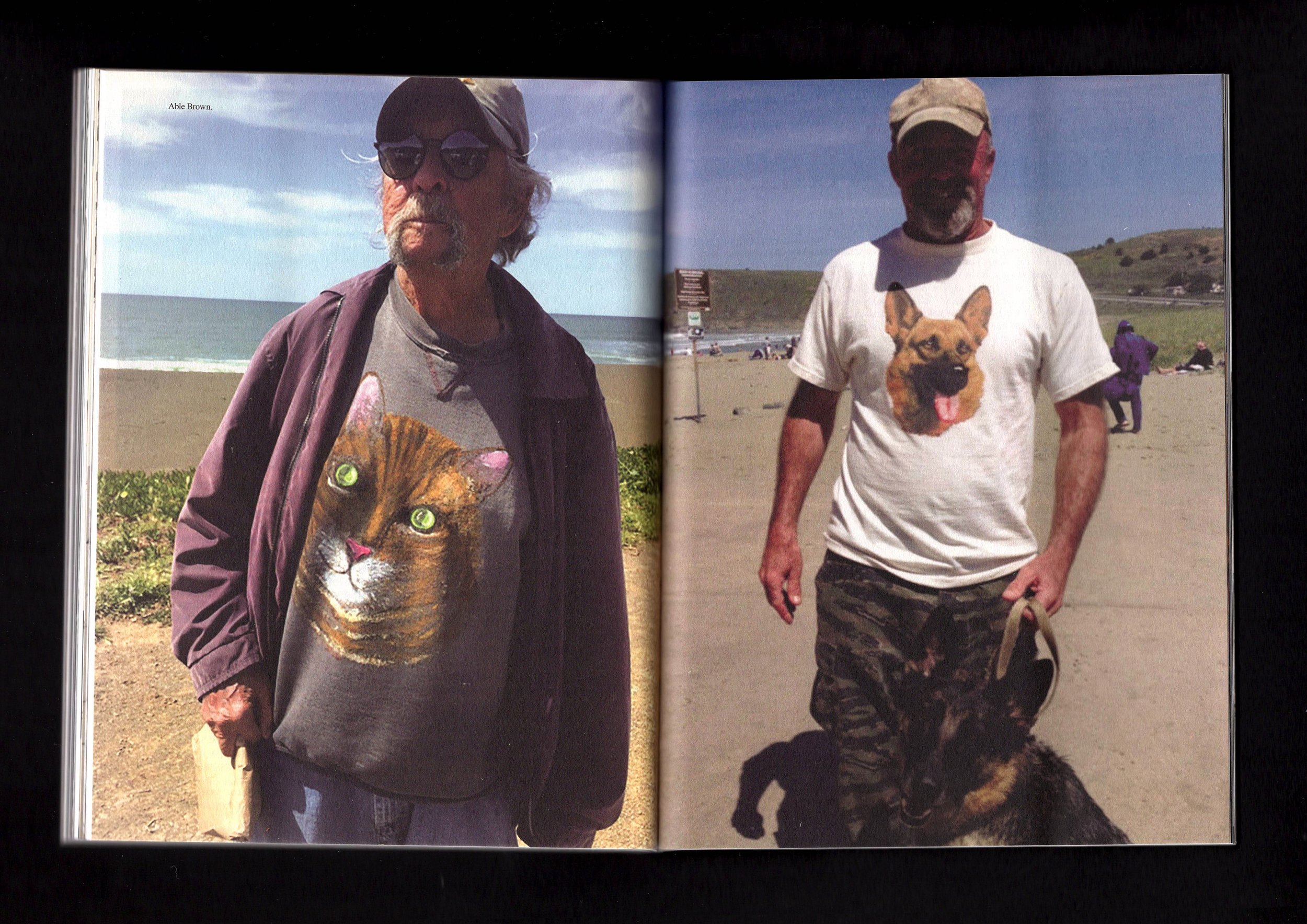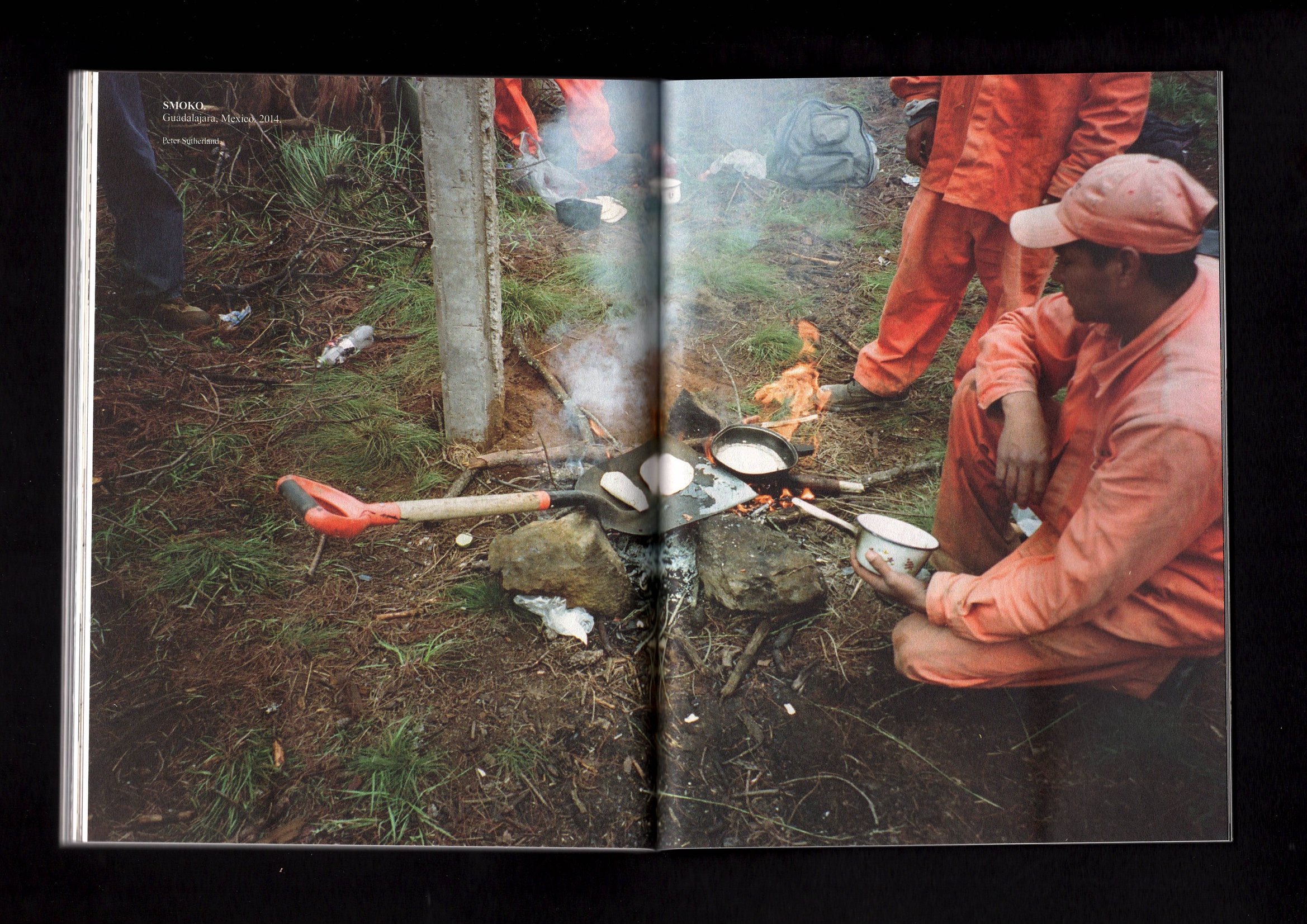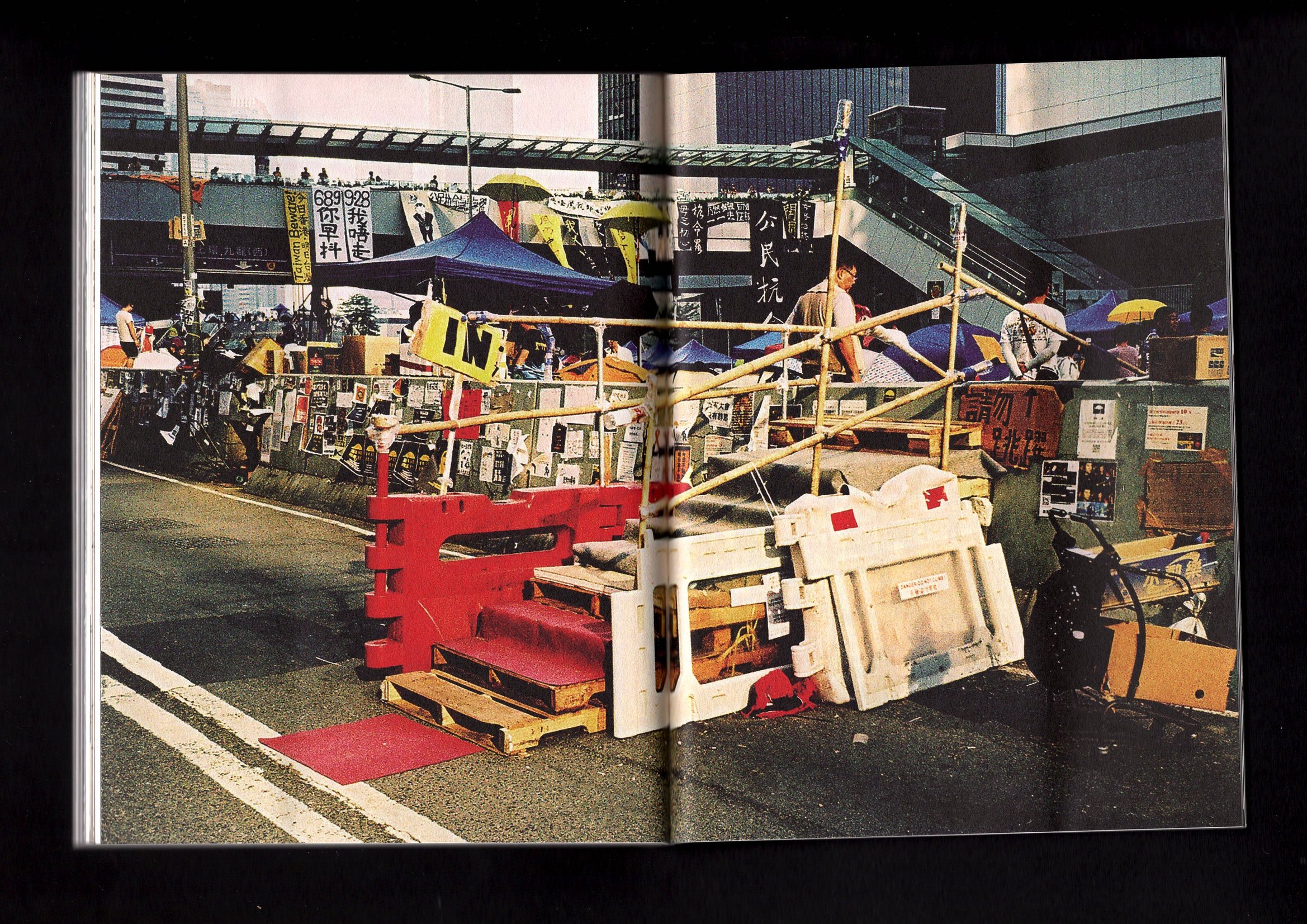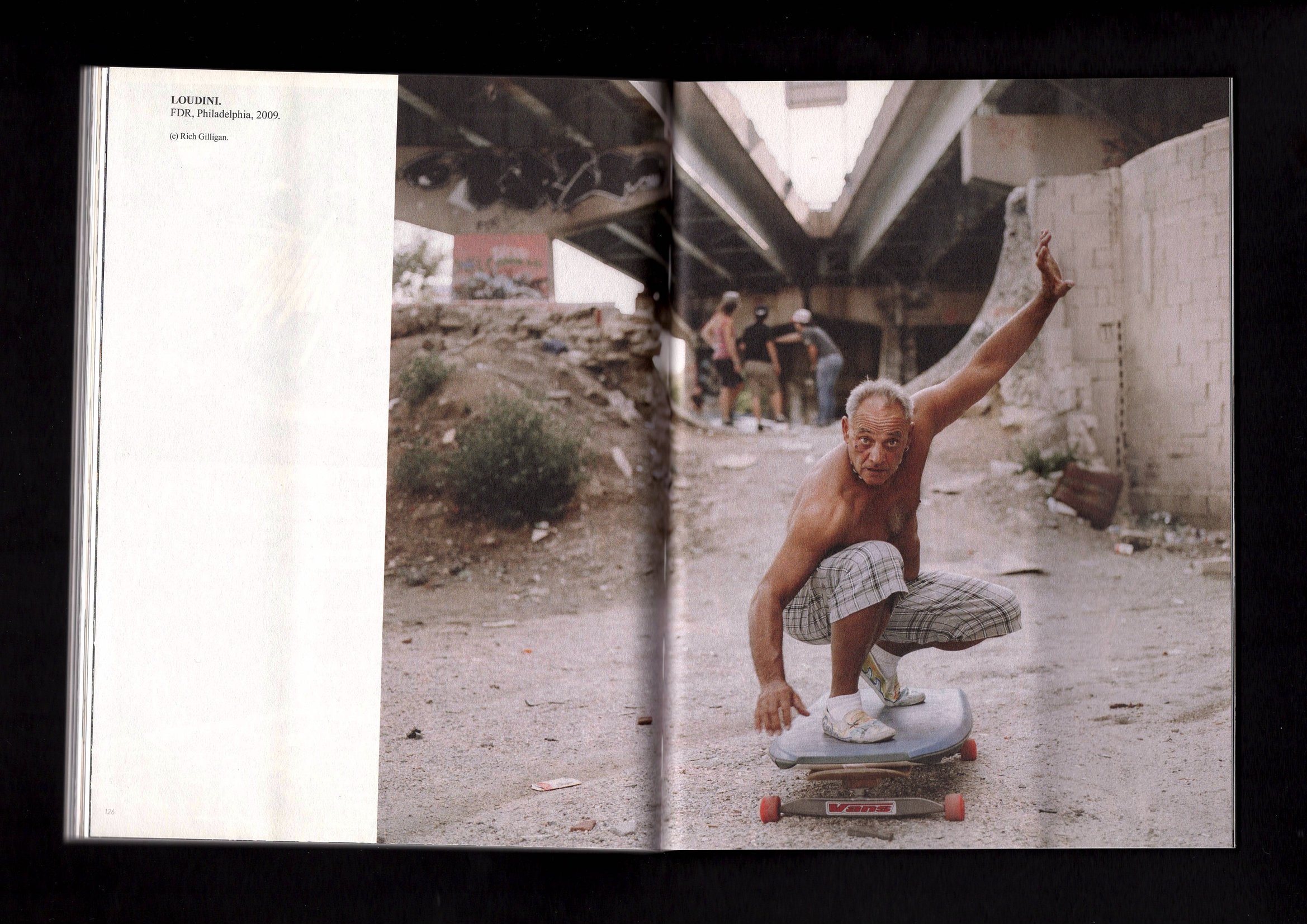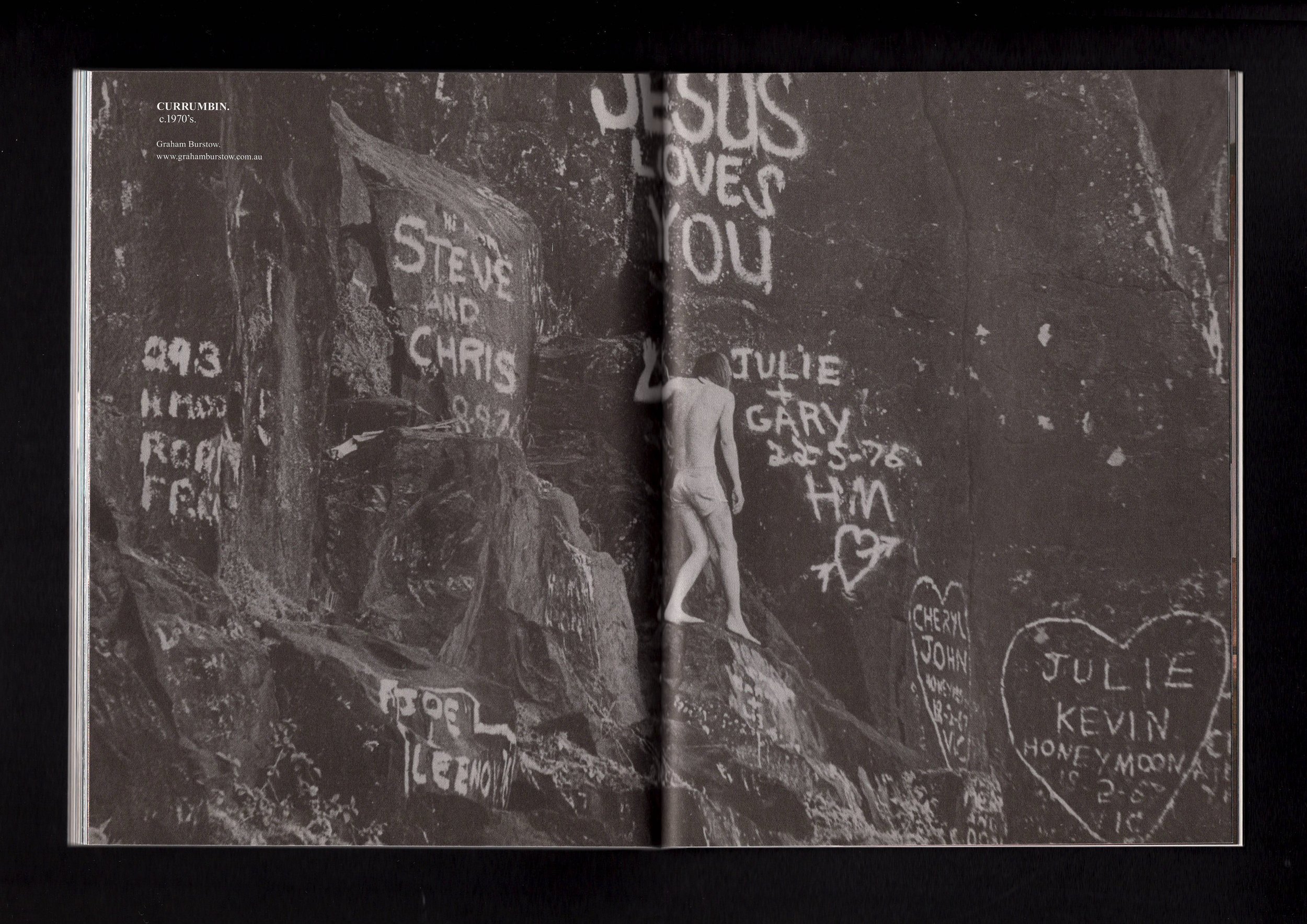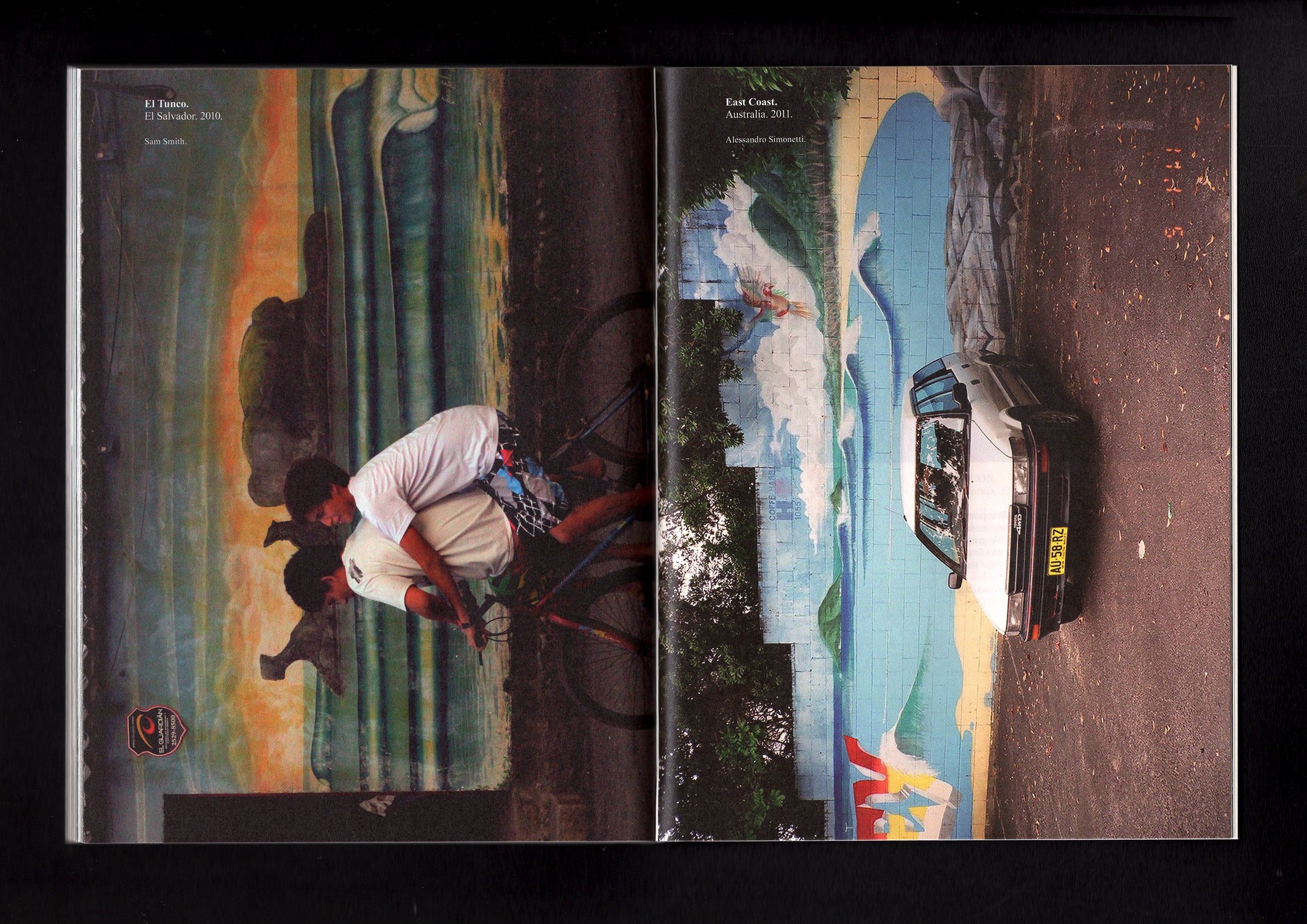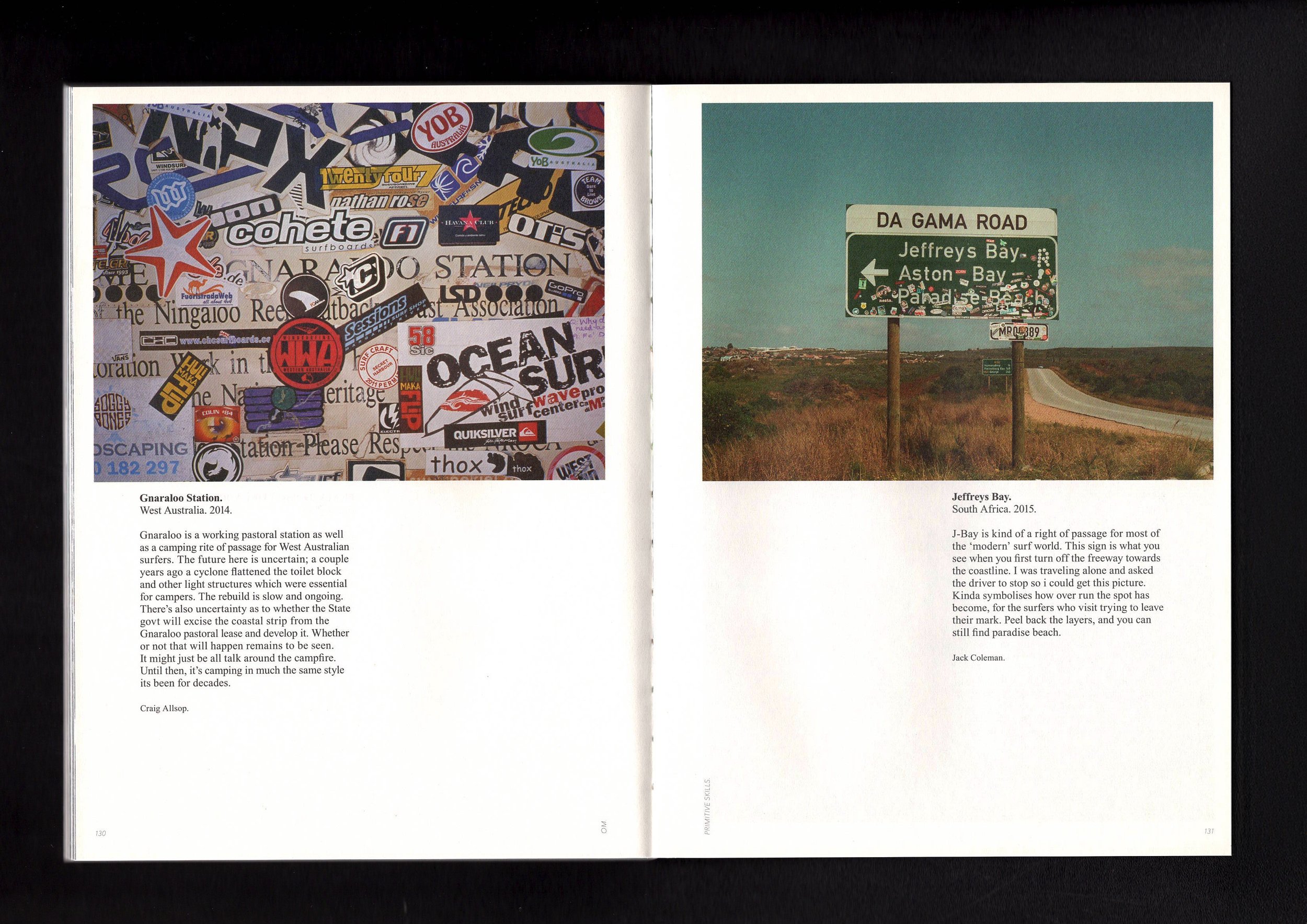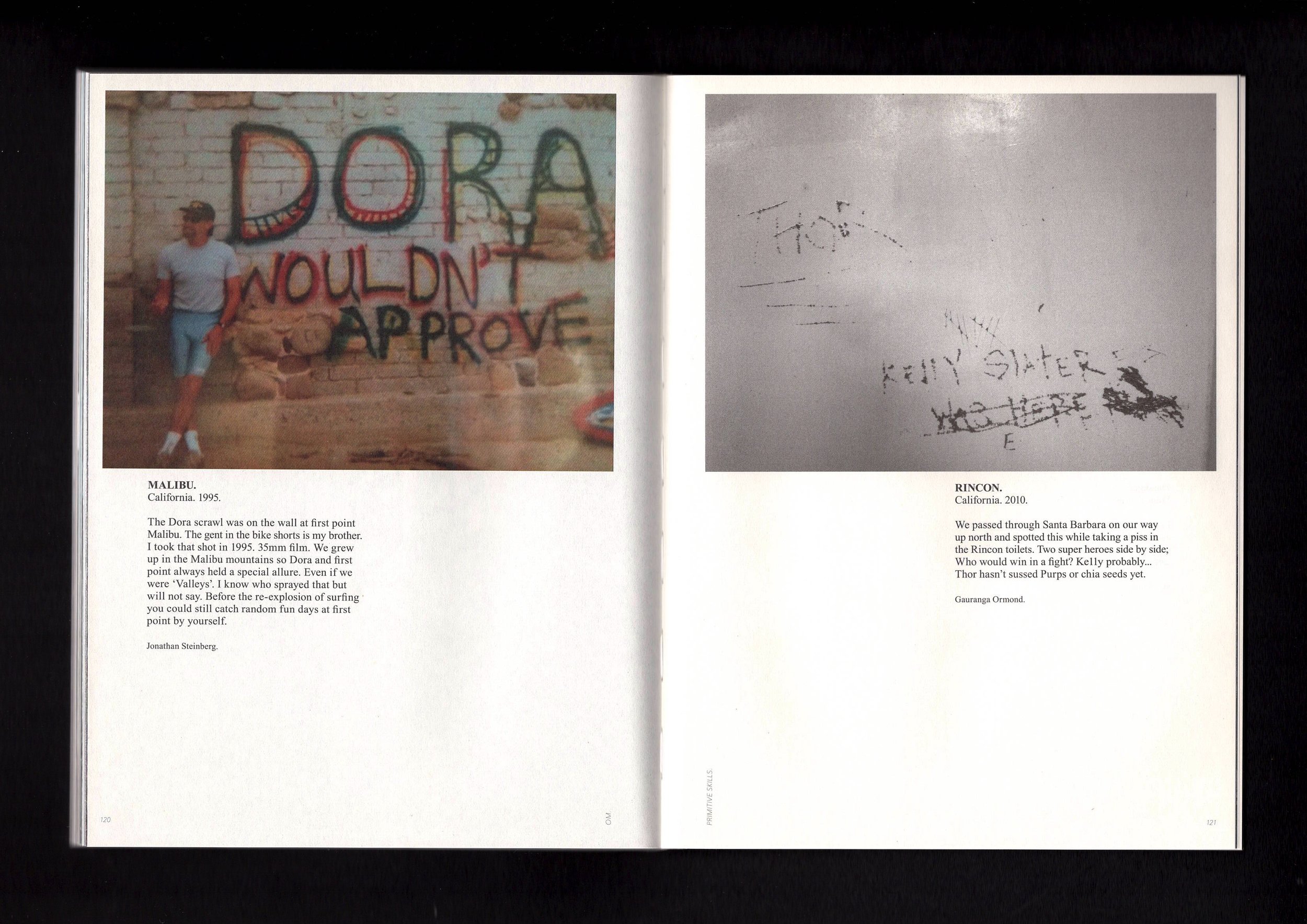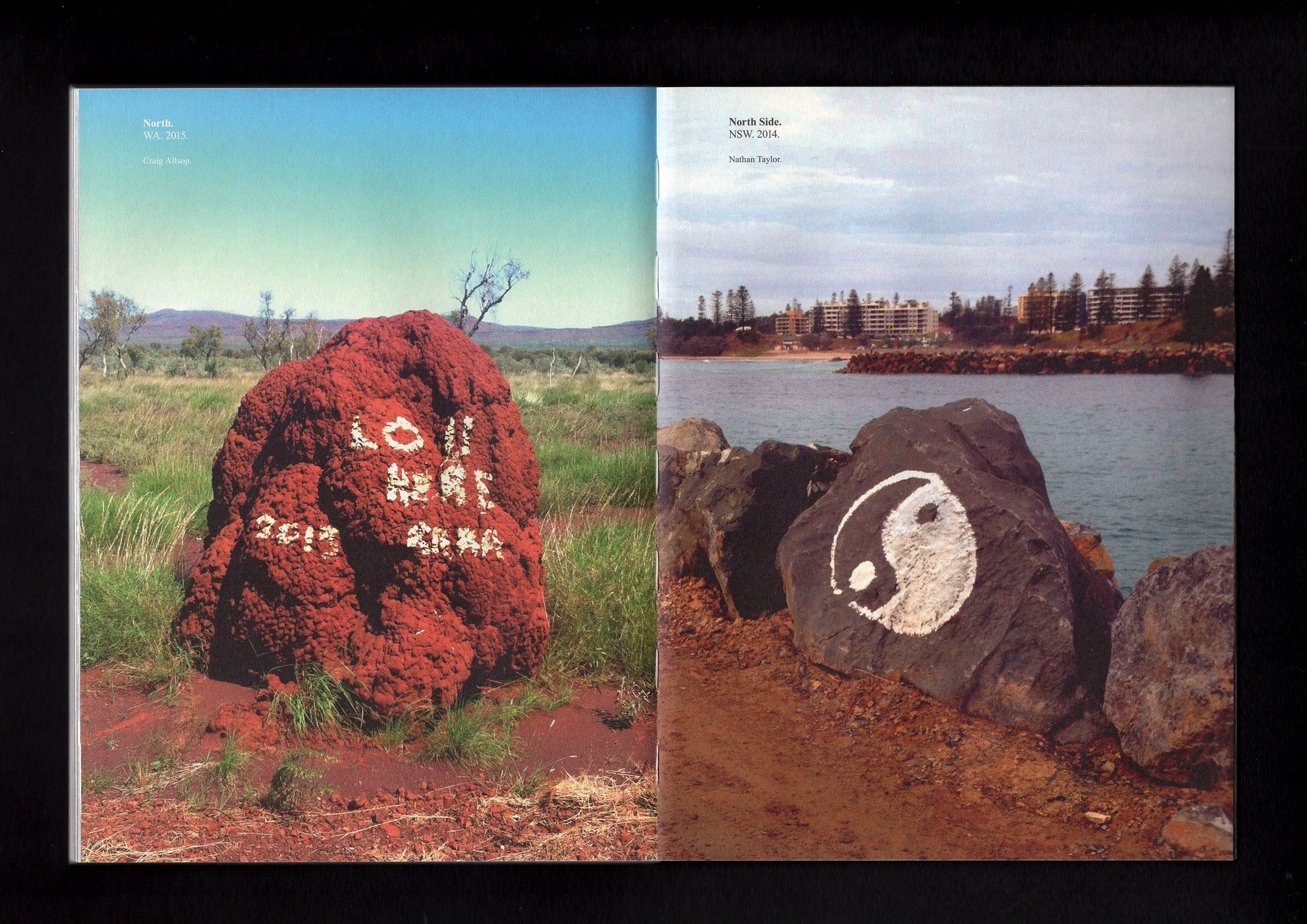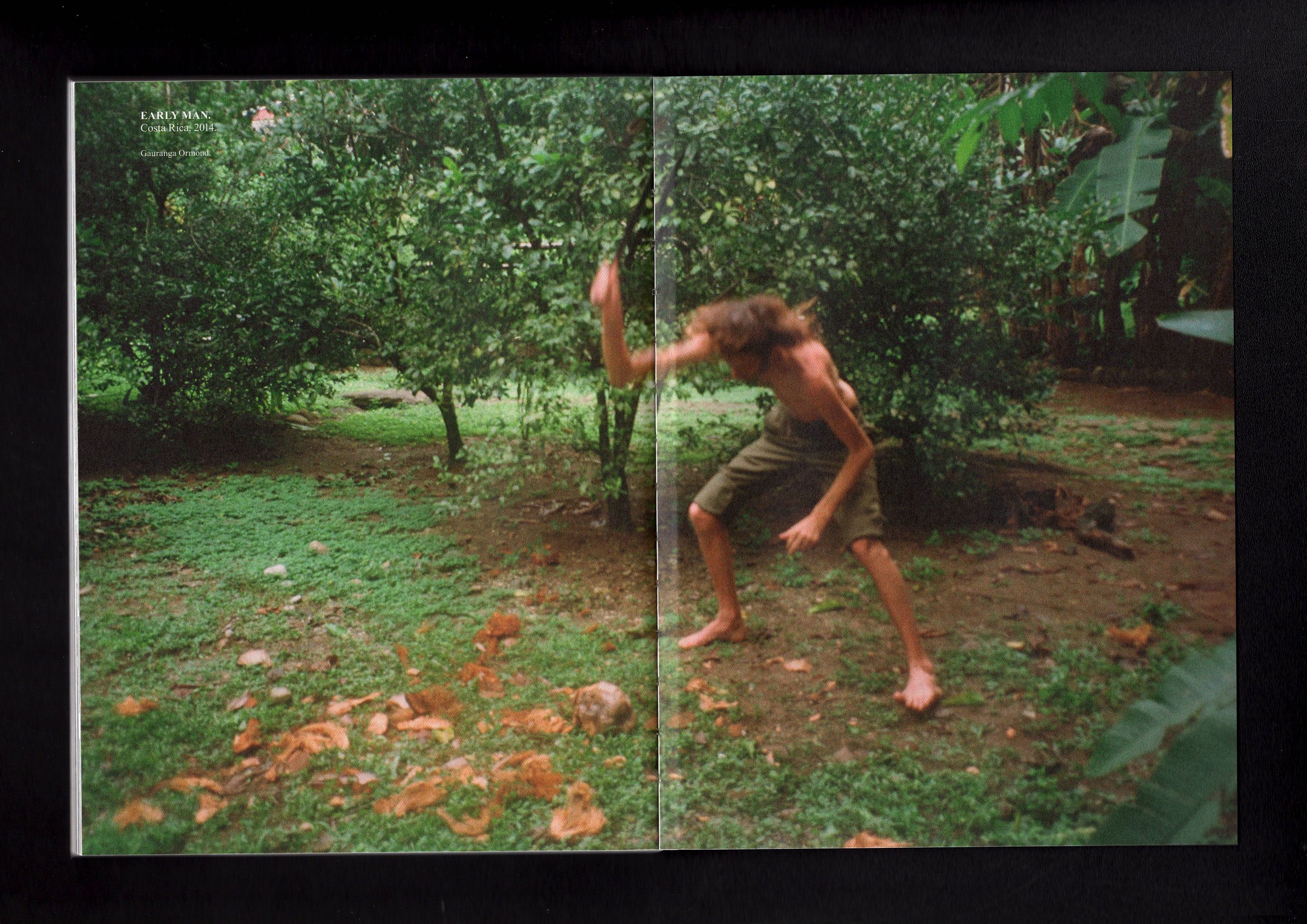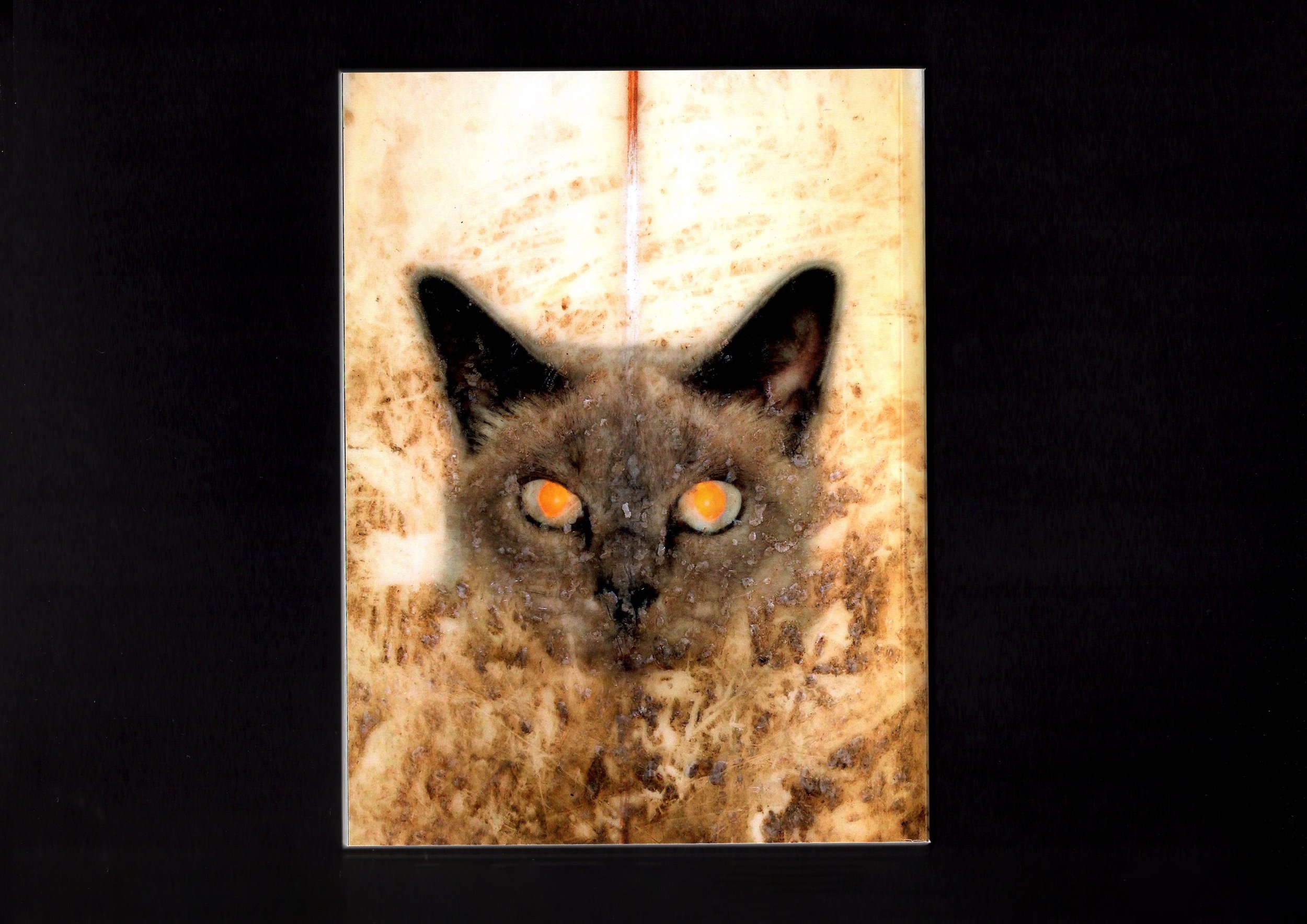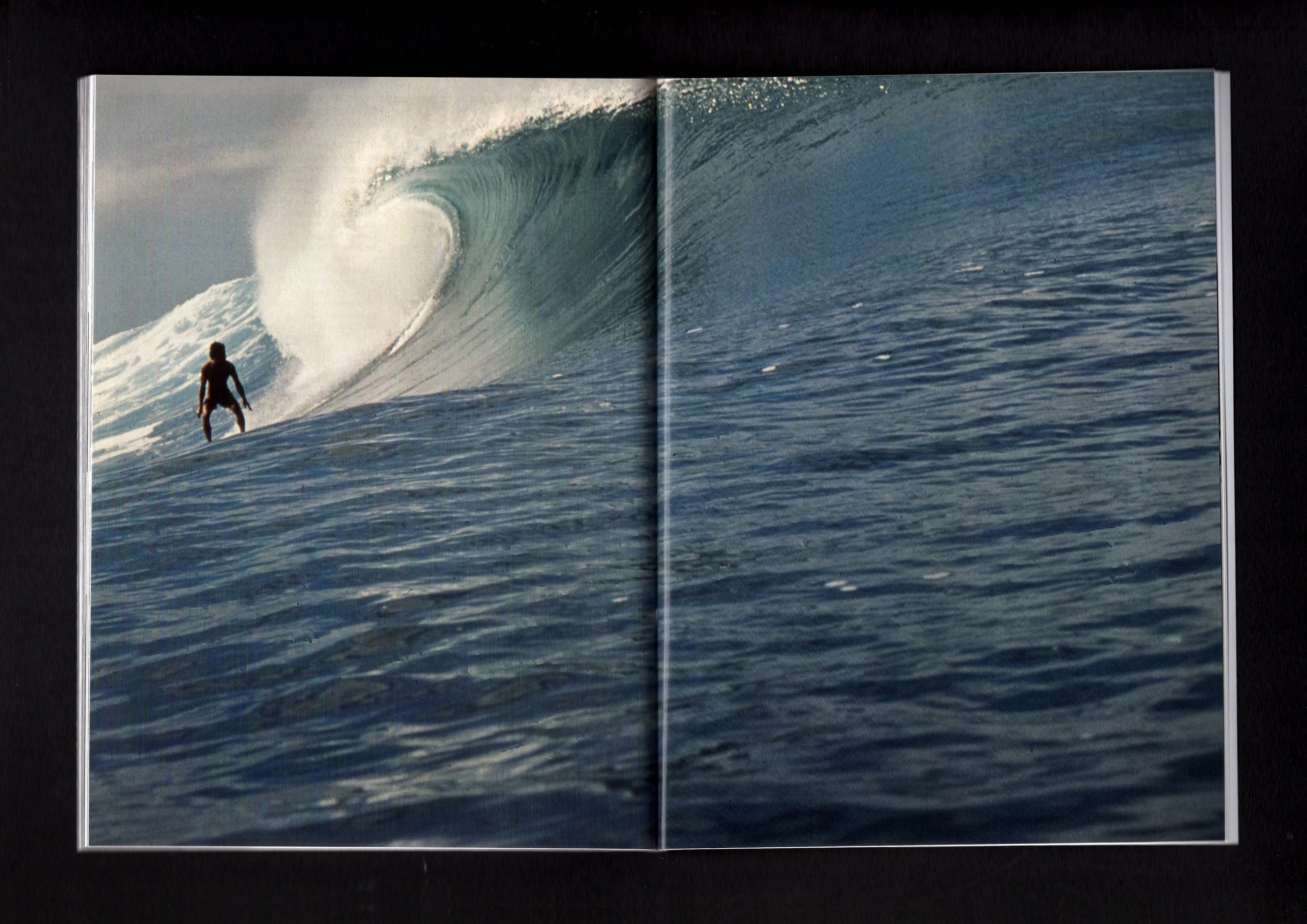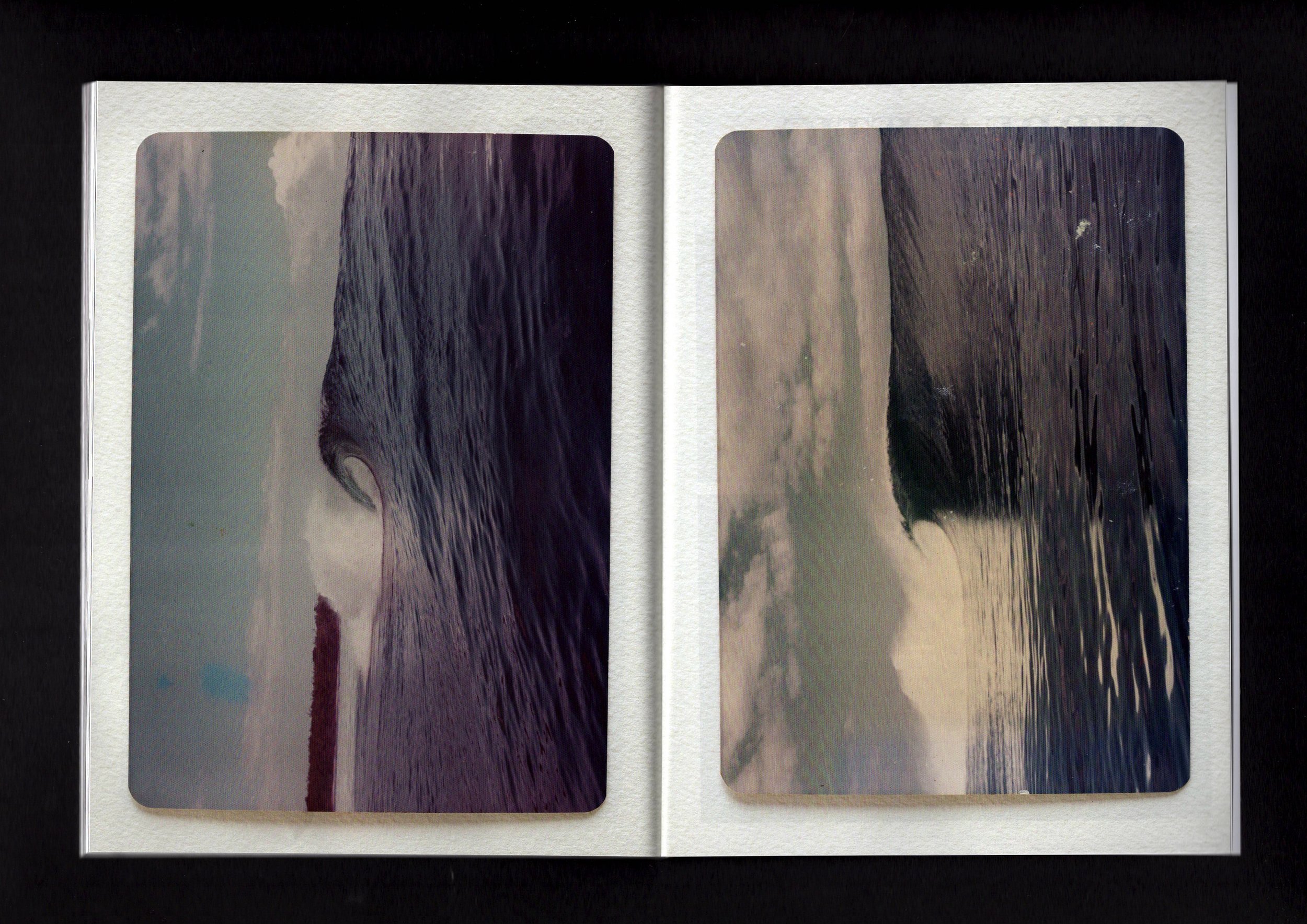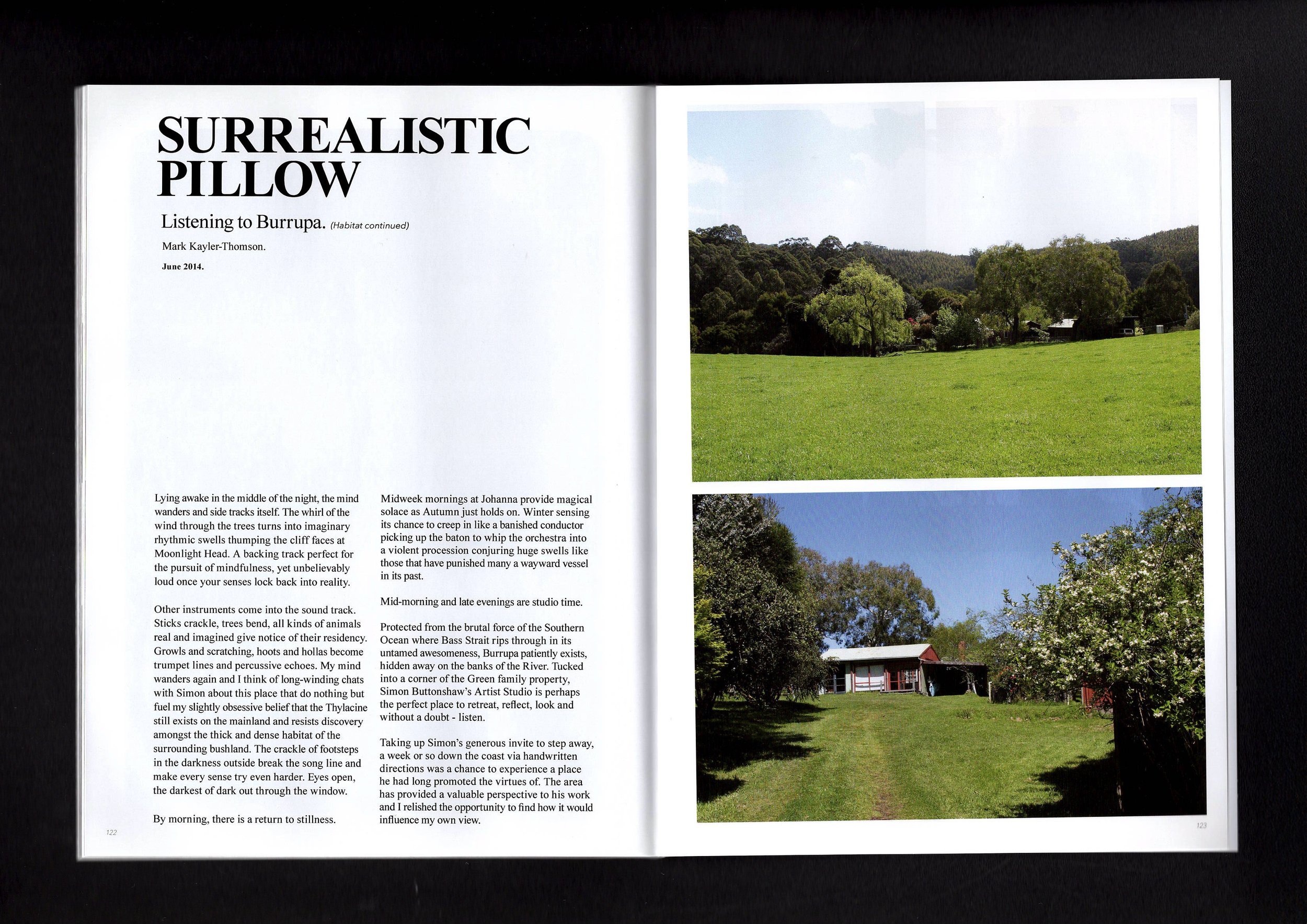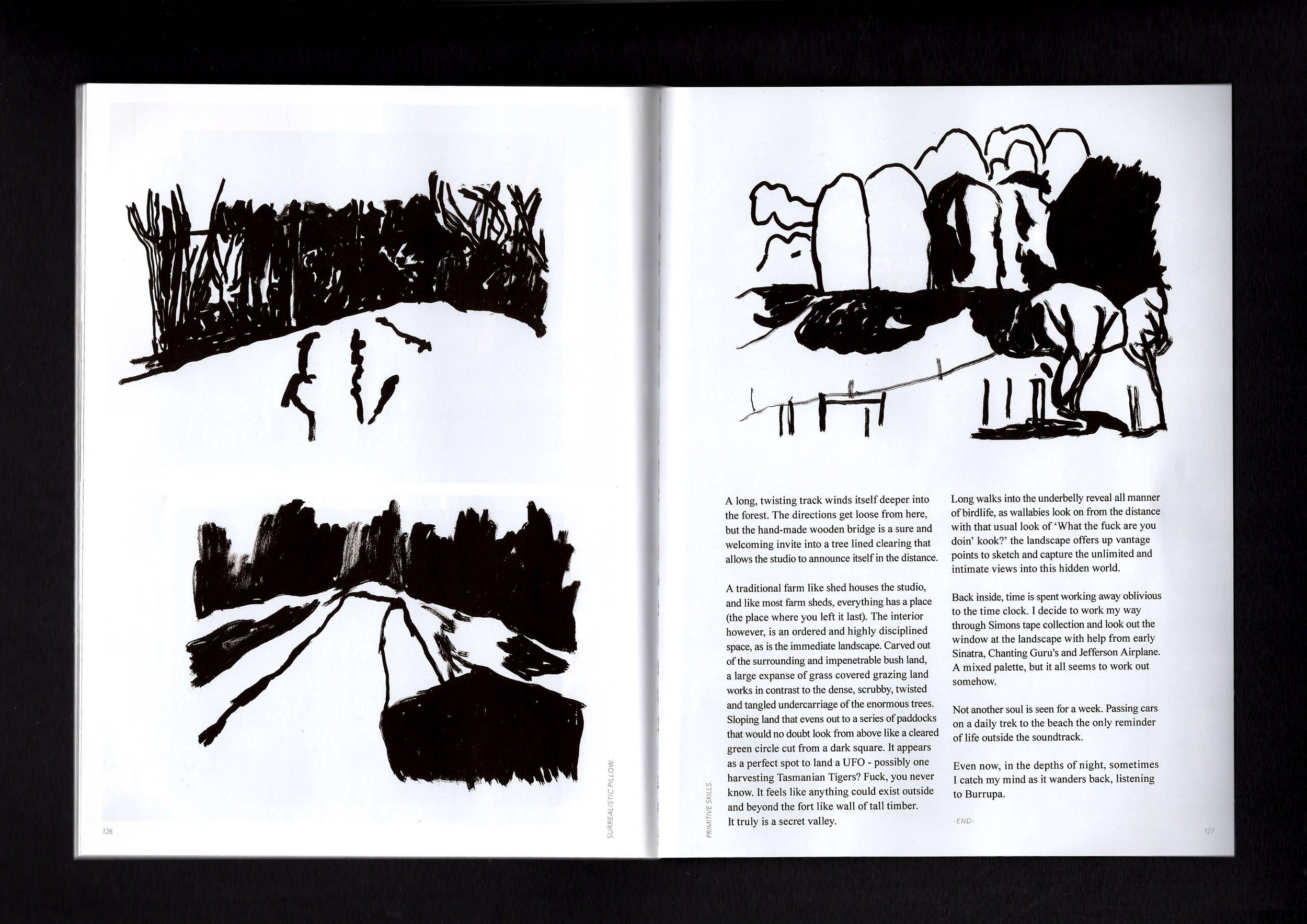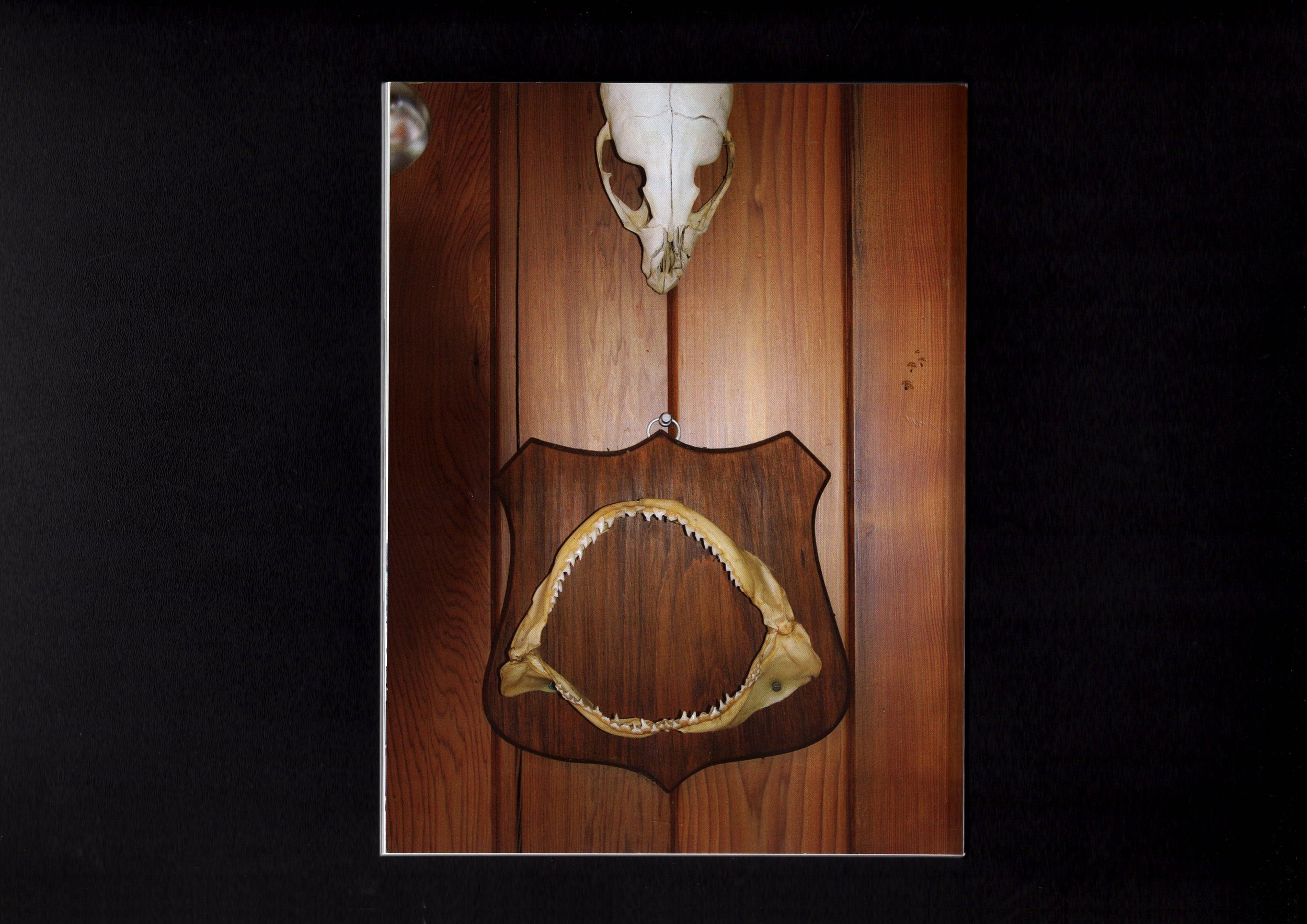More from Volume 05…
Promotional poster for Greenough’s 6-Pack. 2023..
SIX PACK
By George Greenough
Intro by Lora Ward.
Despite relentless experimentation and innovation, a recurring sentiment for Greenough is how much can be done with so little. Greenough lives a life that is both simple yet rich with meaning. This asceticism is not a passing fad or an aesthetic appropriation but an authentic way of being, and his films, the way in which they were conceived, shot and then distributed, are its ultimate expression. In the finale Echoes, a 22 minute tube journey awash with the music of Pink Floyd, Greenough reveals visions from the inner sanctums of the wave. I was lucky enough to see the 6-Pack that night at the Lennox Community Centre, only a kilometre from where the footage was shot fifty years ago, and I was left feeling what original promo poster for Echoes had dubbed as “the highest high imaginable”.
Acherontia atropos. Mallorca. 2022.
METAWEEK
By Julian Smith
Over the course of one week on the Balearic Island of Mallorca, these events took place. At that time most would disagree with the self-imposed efficiency system I set up, yet a few were able to relate. I made it past 40, less a few teeth, a shot knee, eating right, 150lbs wet, gave up the beers three years earlier, one dog, no kids.
Study of seacoal. Jack Whitefield. 2023.
KEUNYSER
Fuel Gatherer
By Jack Whitefield.
“Keunyser” [koe’nI’zEr], m. – the Cornish term for a ‘fuel gatherer’ – Seacoal emerges from the ocean, unintentionally ensnared by trawling fishermen and delivered ashore. This material encapsulates contradictions, once a driving force propelling the progression of human civilisation, coal now casts a shadow over the very systems it once fuelled. The work is an act of labour, meticulously charting marks on paper through repetitive motions that evolve into a ritualistic performance. The coal is rolled, pushed, pulled, and rubbed, tracing the material’s path of inevitable decay. Once revered, these coal relics now stand as silent witnesses to the complexities of progress and the delicate equilibrium needed to preserve our world.
‘This is the first board I ever shaped in the summer of 1966-67.’ - Wayne Lynch
WAYNE LYNCH ON KAUAI IN 1969, ANDY IRONS, AND TRYING BARREL ROLLS.
Sam Rhodes in late 2021.
Back then people wouldn’t have believed a carving 360 like that was ever going to be possible. The other thing, and I tried to do - it surprises me now with the aerials that they don’t try them – was barrel rolls. Going up completely upside down and landing inside the wave. I made boards to do that and try them, but I got sick of wasting waves, so I gave that one up (laughs).
PRIMITIVE SKILLS
Volume 04
2021
From 1000BC to right now, Primitive Skills Magazine Volume 04 has arrived. With a busted knee Craig Robbins leaves the beach and travels across the USA in search of Futuro. Tim Lehi shares visions of the Surf Gods. Sam Rhodes takes a ride with the Paihiatu Funeral Posse. We consider the reality of realities on Cape Verde with Ian Patton. A funny thing happens to Zach Sebastian on the way to Zed Records. Sam Smith comes down with a terrible case of Echolalia. James Jackman takes us inside The Oasis in Miami, Florida. Before introducing our half-fast, one eyed collection of airbrush arts, Shane Egan discovers his own oasis in Tonga and inadvertently The Ancestors of Polynesia. Our excursion ends at empty first point Malibu with some civil surf disobedience by Charles Smith and friends.
Contributors. Jye Barclay, Shane Egan, James Jackman, Nat Johnsen, Tim Lehi, Stanley Mouse, Ian Patton, Craig Robbins, Zach Sebastian, Charles Smith, Sam Smith, JP St Pierre.
More from Volume 04…
Surf and Die. Tim Lehi. 2020.
SURF GODS
Tim Lehi.
Tim Lehi is an American guitarist, visual artist, designer and renowned tattooist, the Surf Gods paintings refer to his time working with the real Don Ed Hardy at Tattoo City in San Fransisco.
Future USA. Craig Robbins. 2020.
DOWN TO EARTH LIVING.
Futuro USA.
By Craig Robbins.
The journey to find all of the Futuro homes in the United States started in Moab, Utah. Chloe and I were at a local swimming hole for the day that a lady at the grocery store in town had told us about it. It was a spot about a mile down a trail that ran along a creek. The trail ended in a waterfall that folks would jump off of into the pools below, where everyone else was swimming around. It was late afternoon, a lot of people had left, and no one was jumping from the falls anymore. I thought I’d give it a go before heading out and finding a camp for the night. I hadn’t paid close enough attention to the previous jumpers, overshot the deep water landing, and ended up going from about 30 foot into 2 feet of water. The jump became more of a fall, and the following hike back to the van was one of the longer miles of my life. All crusty from the water mixed with sand, fuckin’ 100 degrees outside, knee throbbing, Chloe helping me navigate creek crossings, hobbling over rocks etc. A pitiful sight.
Dale Egan. Gold Coast. circa 1970.
SHANE EGAN.
Introduction to Airbrush Arts.
Shane and younger brother Dale cruised the strip between Palm Beach and Collaroy in a psychedelic painted Austin A40. In the latter part of the Sixties Shane began designing Surfrider Club logos and surfboard decals. By the end of the 70’s he had designed or hand colour separated virtually all of the NSW and Qld board decals and several for NZ. Shane’s clientelle included Joe Larkin, Keith Paull, Peter Drouyn, Col Smith, Barry Bennett, Ron Wade, Chris Crozier, Peter Crawford, Michael Peterson, Richard Harvey, Wayne Bartholomew, Brian Austin, Bob McTavish, Mark Richards, Neal Purchase, Gill Glover, Geoff Darby, Alan Byrne, Bob Davies, Paul Shanks and Kingsley “KKK” Kernovske.
Public mural on Cape Verde about recycling and keeping the sea clean. Ian Patton. 2021.
CABO VERDE.
By Ian Patton.
While sitting on the plane, unable to keep from staring at the intricate robes of the guys getting on the plane, it sank in that the reason the ticket was the most affordable was because it was 11:30pm and we hadn’t taken off, and so we would land around 3:00am. The man who sat next to me holding a duty free bag and a Koran asked in Portuguese if I was going to Bissau, and I shook my head and hesitated thinking for a second I was on the wrong flight. Making arcs with his hand, he explained the plane would land briefly in Cabo Verde, and then go on to Guinea-Bissau. “Don’t fall asleep”, he smiled. “You will miss your stop”.
PRIMITIVE SKILLS
Volume 03
2018
The third embodiment of Primitive Skills, the high-minded, independent, sub-surf culture magazine is now. It begins with Jye Barclay at Club Troughton, a tropical paradise isle. Craig Allsop covers the ongoing saga of a West Australian farmer & his micro nation. There’s Plenty of Room at the Bottom with Thomas Lynch III. Jeff Devine introduces Ken Mitsuda & the Paradise of Youth. Jumpei Seto shares his unfinished series West Coast. Brothers Ormond inquire further into the science of yoga in YOLO to Yogi Part Two. Boss DJ Christo selects treasures from the archives of Dale Egan. From LunarTec to Gondwana Tech and a survey of interpretive innovation. Finally we reach The Magic Island where Wendy Adcock recalls her days on the run with Peter Troy.
Contributors. Wendy Adcock. Craig Allsop. Jye Barclay. Able Brown. Ari Browne. Ed Davis. Ryan Cookson. Jeff Devine. Dale Egan. Christo Gillard. Rich Gilligan. Harry Henderson. Mark Kayler-Thomson. Amanda Lo. Thomas Lynch III. Hiromi Matsubara. Edie Mitsuda. Ken Mitsuda. Wiggy Mitsuda. Gauranga Ormond. Nanda Ormond. Gerald Saunders. Jumpei Seto. Sam Smith. Peter Sutherland. Francisco Tavoni. Nathan Taylor.
More from Volume 03…
Hawa’ii 1978. By Ken Mitsuda.
THE PARADISE OF YOUTH
Ken Mitsuda
Introduced by Jeff Devine
Ken’s enculturation into the secret surf society of Sunset Cliffs in the 70’s made him keep his mouth shut about good surf spots. As the years went by and we talked on the phone he would be vague about where he and his wife Wiggy had traveled to but would pile on descriptions of perfect waves and lifestyle. I could usually figure out where he had traveled to but many times I was stumped. Usually you can prod a friend and in a weak moment they will spill the beans. Not Ken. But you could narrow the guessing to where the best lefts in the world are. His world seemed to be a paradise…
1980. Paper Collage. By Dale Egan.
DARE
Dale Egan
Selected by Christo Gillard
The year was 1977 and somehow Warriewood’s best goofy footer was fermenting in the Chelsea punk scene with John Joseph Rotten. Dale meets Christo in the mix, by the dawn of the 80’s they were bootlegging surf films and cooking schemes up and down the east coast of Oz. A Lunar Tec on the Lilypad, both men became accomplished collectors and selectors. Dale is a survivor, recently surviving Kempsy’s great Dare Espresso Milk shortage. Moving north after floods on the Northern Beaches destroyed much of his collection. A lot of good history was lost. Boss DJ Christo visited last year and selected these treasures from what remains.
Prechuap Khiri Khan. Thailand 2012. By Ryan Cookson.
GONDWANA TECHNOLOGIES
2018
Technology is often inacuratly represented as cutting edge scientific advancement new materials, performing new functions to achieve new ends. Sometimes old materials can perform old functions to new ends, or, old materials perform new functions to old ends... The possibilities are not quite endless but they are many. Technology is the craft of applying knowledge for practical purposes, with hope of finding solutions to a problem at hand. Like anything it is relative to its surroundings and is nothing without context. With this broadened perspective we can see technology all around us. Suddenly the line between primitive and progressive becomes less clearly defined, blurred by a common bond - necessity.
Namotu Island, Fiji, 1986. By Wendy Adcock
THE MAGIC ISLAND
Wendy Adcock
Interview by Edie Mitsuda
My mother demanded that I get in touch with her good friend from Noosa who owned a place ‘somewhere, maybe half way up the volcano’. I went there and stared out of the huge, cold windows down at Maalaea Bay. The West Maui Mountains were shrouded in scudding, flat-bottomed cloud. The first time my mother and Wendy met they were young, with rangy brown bodies and hair hanging low at their waists. That was about 1976, and by this time Wendy had already begun her series of long journeys with surfing legend, Peter Troy. Their travels were extensive, rousing, lawless, wild. I thought I knew this, but after pondering all of these absorbing and carefully-recalled stories, I realise I didn’t know much at all. Wendy globetrotted with Troy for a good part of his life, but, for once, this is not about him…
PRIMITIVE SKILLS
Volume 02
2016
This is the much prophesied second coming of Primitive Skills primordial surf scriptures. Enter Volume 02 with a second serving of Glazed Pork, waiting in the west with Craig Allsop. Ray Potes’ EZ Beach for the first time in full colour. Why is it bad to kill an accidental robot? Harry Henderson and the Baja Satchmo are south of the border, while Mariah Ernst goes deeper in Borneo. The highs and lows of early surfing Fort Point via Brian Tissot. An introduction to OM by Peter Sutherland. Signs, Symbols, Omens, and the search for Fountainhead continues.
Contributors. Craig Allsop. Graham Burstow. Jeff Chamberlain. Jack Coleman. Ed Davis. Mariah Ernst. Ryan Heywood. Harry Henderson. Misha Hollenbach. Derek Hynd. Ray Johnsen. Edie Mitsuda. Josh Mendes. Nanda Ormond. Gauranga Ormond. Ray Potes. Alessandro Simonetti. Sam Smith. Jonathan Steinberg. Peter Sutherland. Nathan Taylor. Brian Tissot.
More from Volume 02…
SF. CA. USA. 1973. By Bryan N Tissot.
EARLY SURFING
FORT POINT
Bryan N Tissot
Because of my age (16 at the time) I was able to secure a public defender who suggested we ask for a jury trial and take the issue public, reasoning that the Army didn’t want the exposure. When we asked for a jury trial in federal court the Army immediately dropped the charges and the next year Fort Point was turned over to the National Park Service whereby it became open to all surfers.
Shell Necklace. By Ray Potes.
EZ BEACH
Ray Potes
For the first time in full colour.
South Africa. 2015. By Jack Coleman.
JEFFREYS BAY
Jack Coleman
This sign is what you see when you first turn off the freeway towards the coastline and Jeffreys Bay. I was traveling alone and asked the driver to stop so I could get this picture. Kinda symbolises how over run the spot has become, for the surfers who visit trying to leave their mark. Peel back the layers, and you can still find paradise beach.
Mexico. 2016. Photo by Rangi Ormond.
MY ARSE SPEAKS
UN POQUITO D’ESPANOL
Harry Henderson
You don’t wanna cross the border during peak hour. Waiting in that traffic sucks! But it can get a whole lot worse if you happen to have a run-in with one of the local TJ/SD nutcase commuters. Men and women alike race through the churros and invalids like Montezuma’s revenge, their chariots: seasoned demolition derby shitheaps. DO NOT fuck around! Better to wait until 3am, mucho take it easy, you know. Go to an Irish Bar, have a couple of Guinness, chill out. There’s a long drive ahead…
PRIMITIVE SKILLS
Volume 01
2014
Primitive Skills Volume 01 is an independent study into the rituals, symbols, habits & habitats of surfers. Misuse of funds, distaste for authority, anti-social behaviour, freedom of thought & other undesirable side effects of salt water to the brain. Reggae Night in Costa Rica with Peter Sutherland & Lele Saveri. Roy Stuart speaks on the influence primitive weapons have on his design theories, also the 70s, reincarnation, lizard-mind, education & time travel. Craig Allsop & Gauranga on cultural outreach in Japan. 1973-2014 community contributions of surfer habitat’s. And finally the search for Fountainhead begins on the lost continent.
Contributors. Craig Allsop. Jonny Brazil. Eric Brunetti. Ari Browne. Raf Browne. Ben Cambana. Ed Davis. Ronny Fenwick. Lloyd Godman. Harry Henderson. Ryan Heywood. Derek Hynd. Richard James. Skip James. Mark Kayler-Thomson. Spencer Murphey. Gauranga Ormond. Lele Saveri. Sam Smith. Roy Stuart. Peter Sutherland. Nathan Taylor. Geoffrey White.
More from Volume 01…
Costa Rica. 2013. By Peter Sutherland.
REGGAE KNIGHT
Photographs by Lele Saveri
& Peter Sutherland.
The crucial introduction to Primitive Skills follows Lele Saveri & Peter Sutherland from NYC to a well known portal in Costa Rica.
Rangi. Ryukyu Islands, Japan. 2013. By Craig Allsop.
BILATERAL RELATIONS
Ryukyu Islands. Japan.
Gauranga Ormond & Craig Allsop.
I’m looking for the Ryukyu Islands on a map and it’s not to be found. I check to make sure I’m looking in the right spot (mainland Japan to the north, Taiwan to the south) then lean over the map and stare as if it’s going to appear. I’ve encountered this before, coming to the conclusion that its omission isn’t due to some underlying intentions, but because the word ‘Ryukyu’ just doesn’t seem to fit next to its more famous neighbours. Like the Japanese and the Chinese that sit to either side, the Ryukyu kingdom once enjoyed prosperity as seafarers trading to both sides. That kingdom is no more, but that’s not to say it’s entirely disappeared.
13’9” Dragon Board. New Zealand. 2000.
LIZARD MIND
Roy Stuart Interview
P.S. Guns?
R.S. I’m not against them, but swords, sticks, spears and bows are more physical, so are more satisfying to use. The physics and dynamics of these old weapons is also interesting and informative. For example there are some huge two handed ‘Flammenschwert’ swords which have undulating blades, there is a lot of speculation over the reason for their blade shape, after the recent discovery of Bumpy Leading Edge Foils (BLEF) and their advantages I’ve reached the conclusion that the sword feature is there for the same reason i.e. improved foil efficiency. The big two handers were swung, and the blades reach a fairly high velocity, developing significant lift in the process. They are essentially a very thin wing which needs to turn quickly. This makes the BLEF ideal for the wide flat blades. When wielding a Great Sword, once they have been put into motion they can be turned easily via blade alignment without using a lot of force, because they are acting as a wing. Seemingly large heavy equipment can be turned quite easily if well designed, just like big wooden surfboards. The more we know the more we often realise just how much people in previous centuries understood.
Surfers Refuge. West Point Tasmania. 2013. By Spencer Murphey

